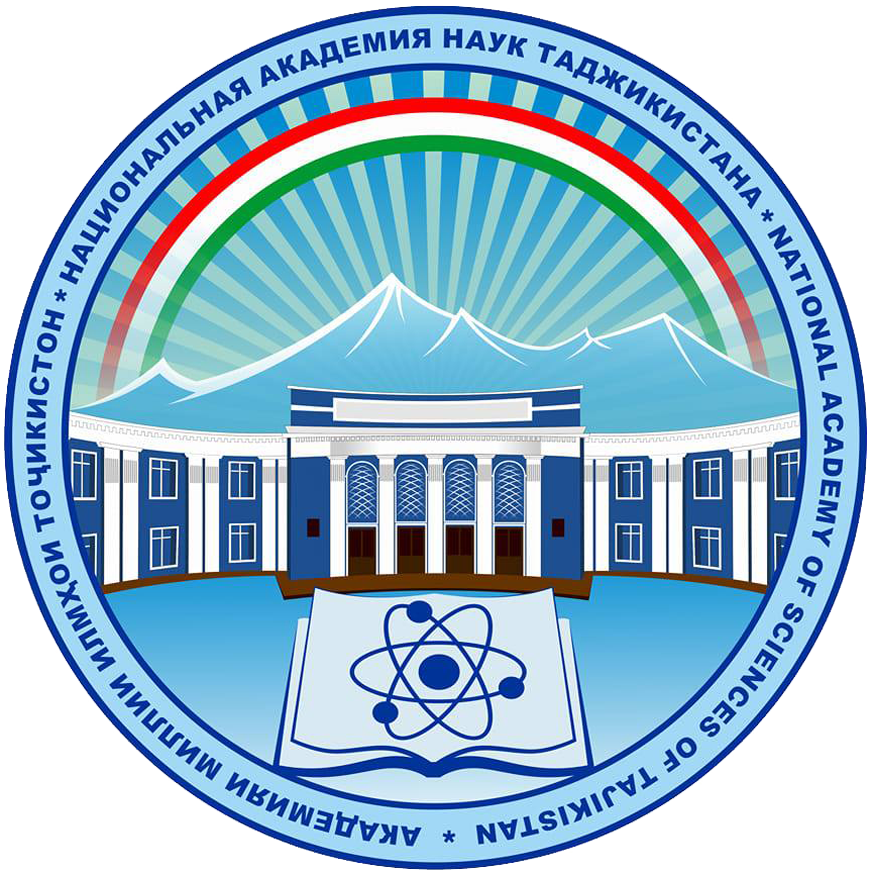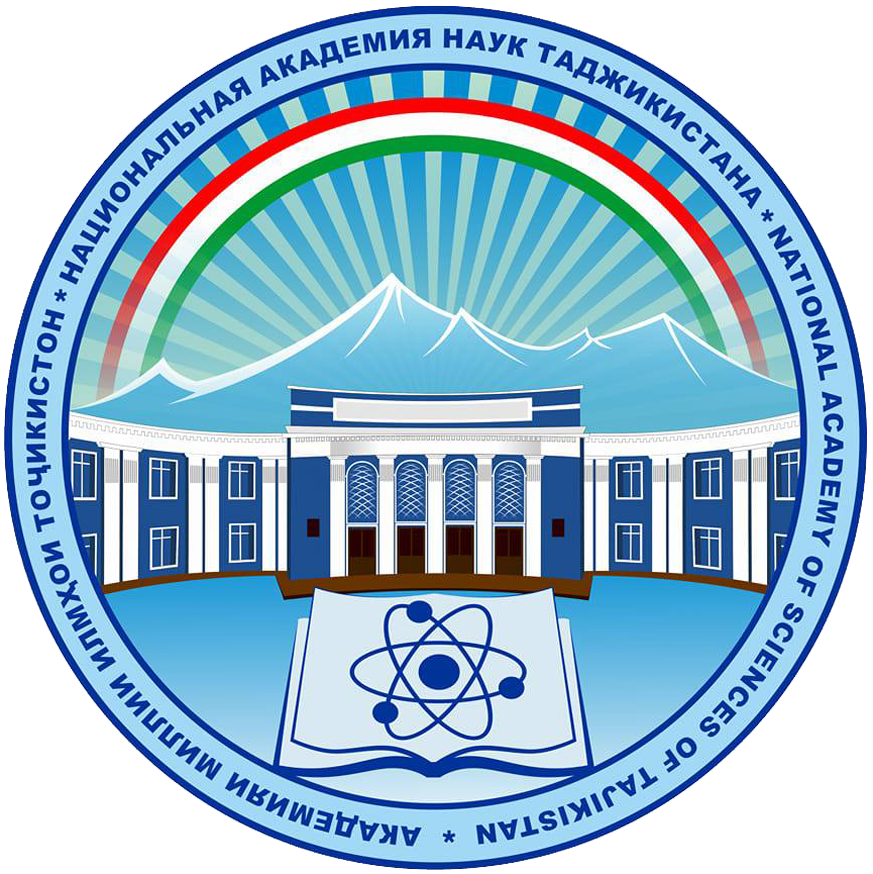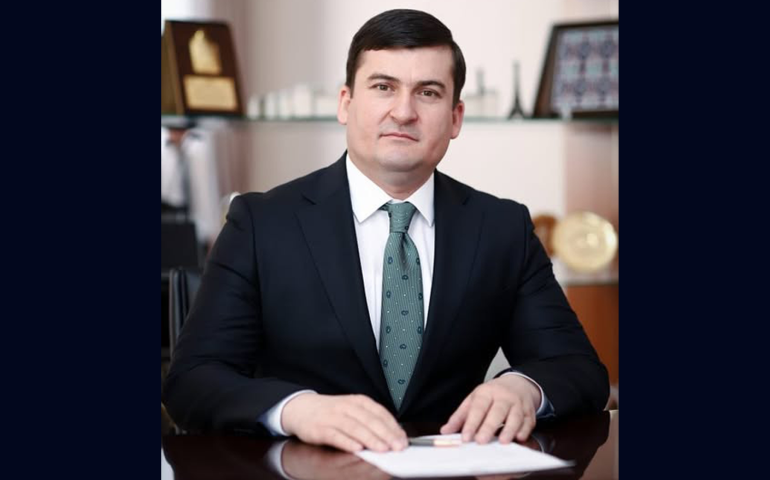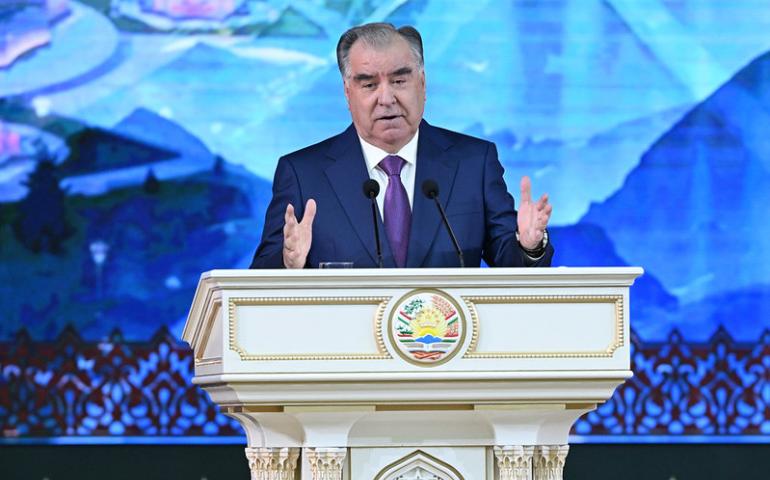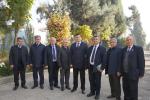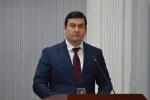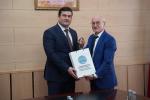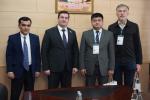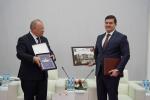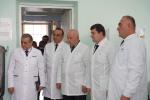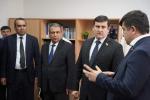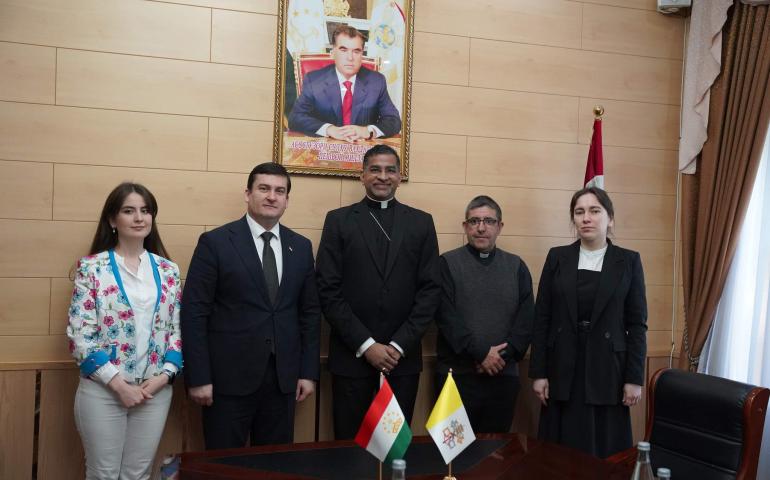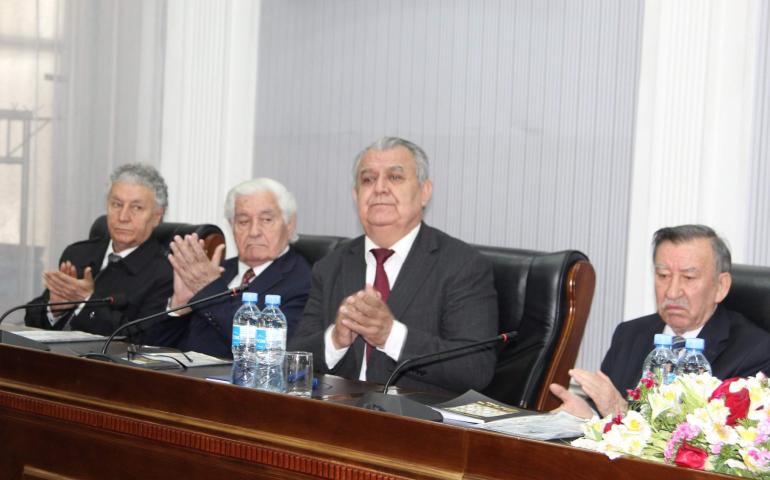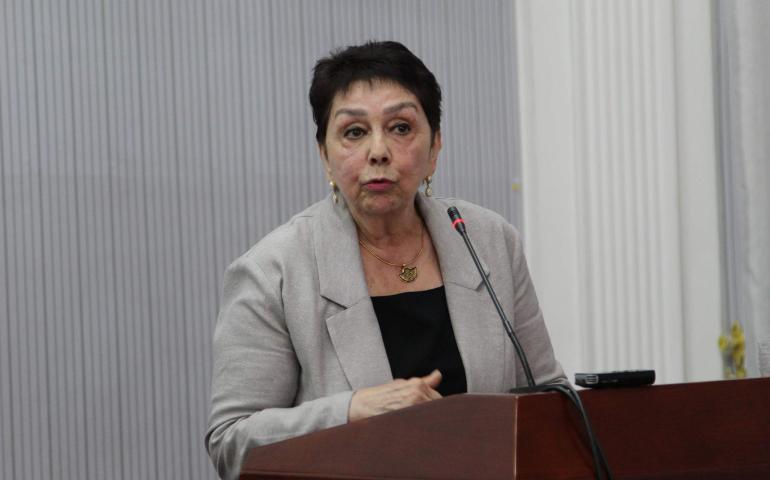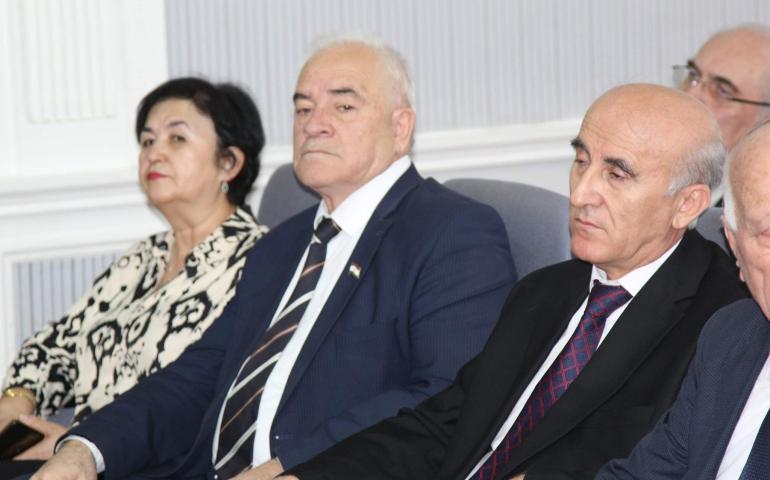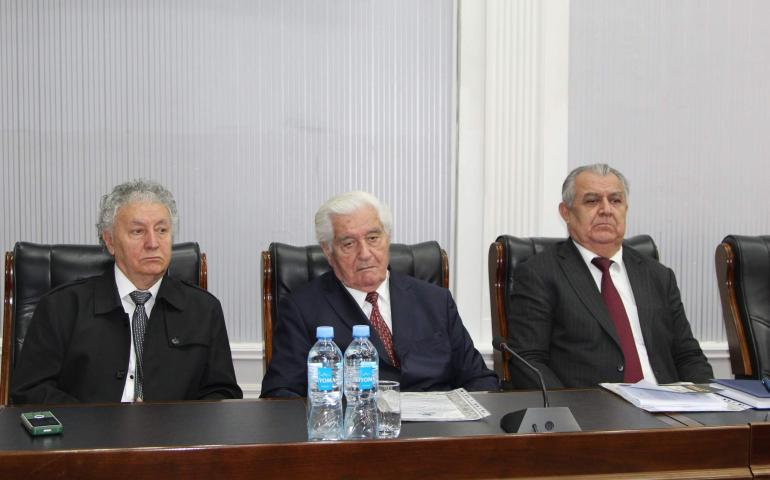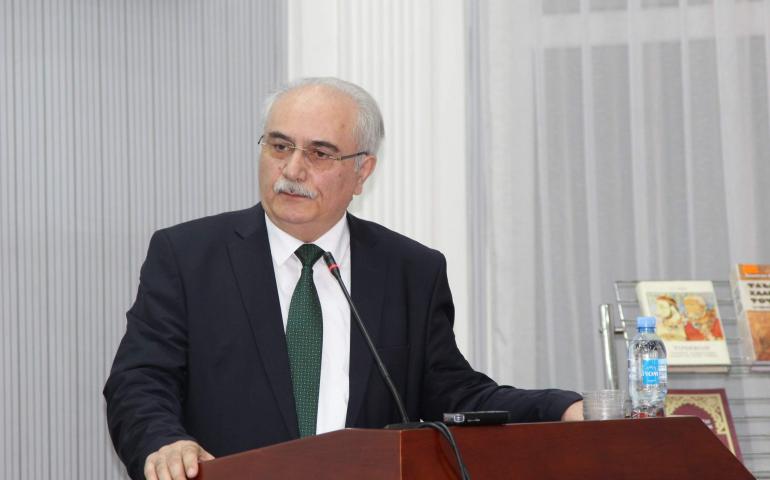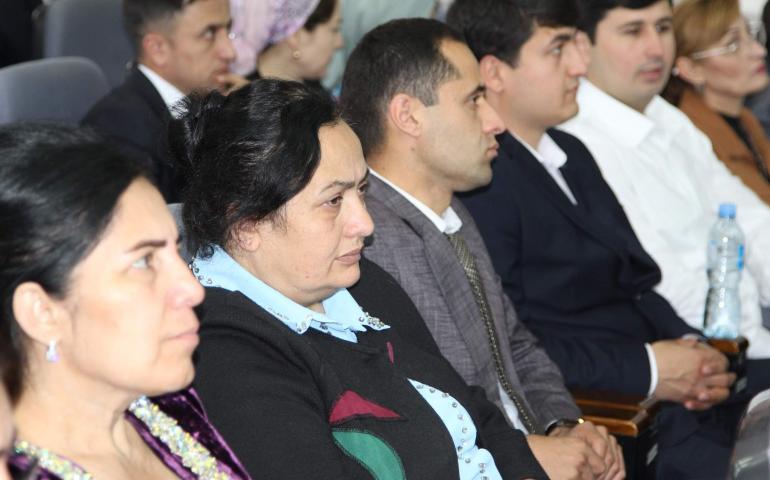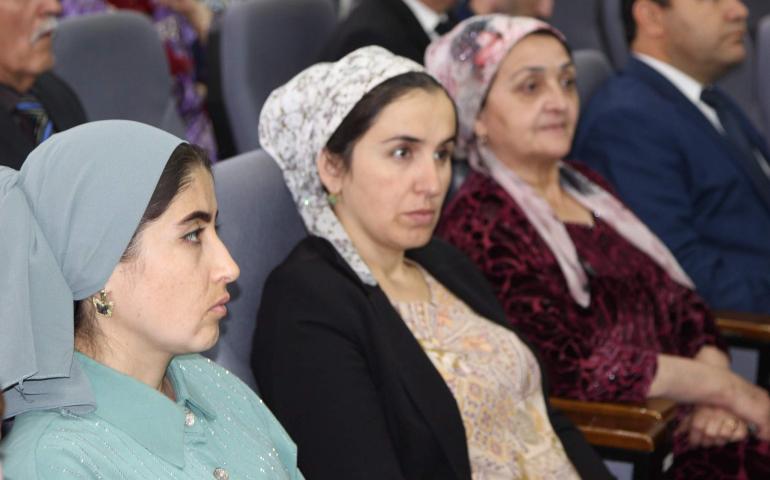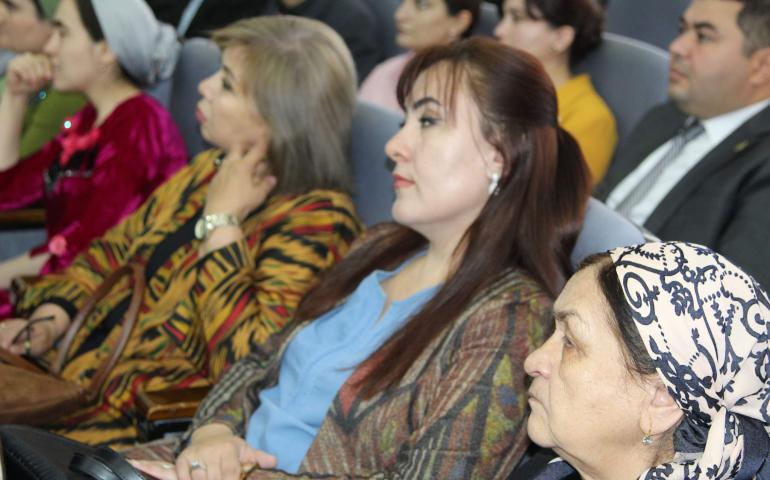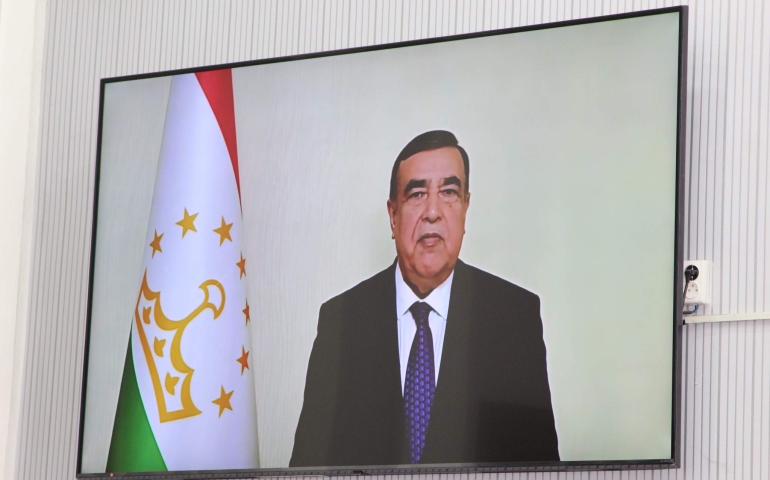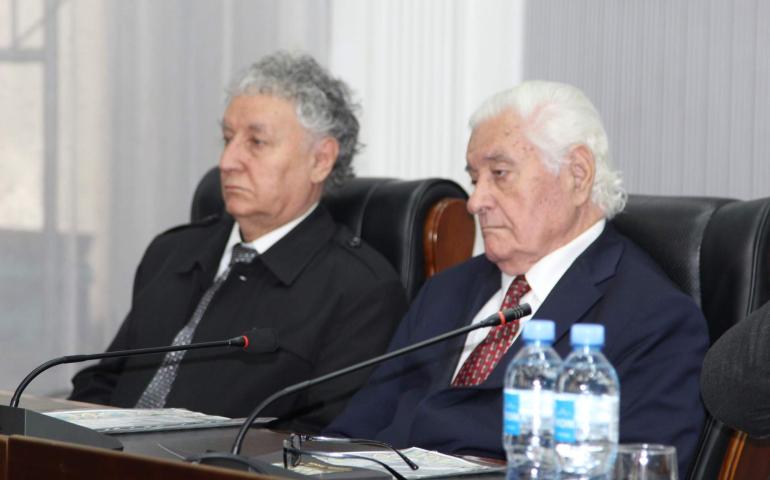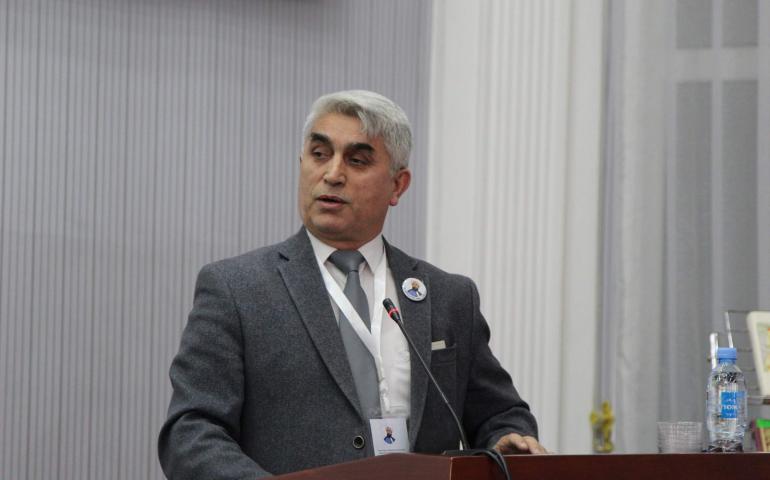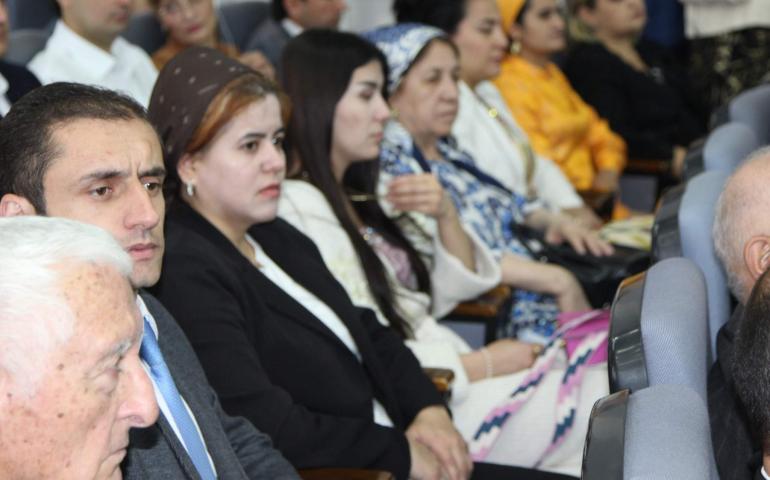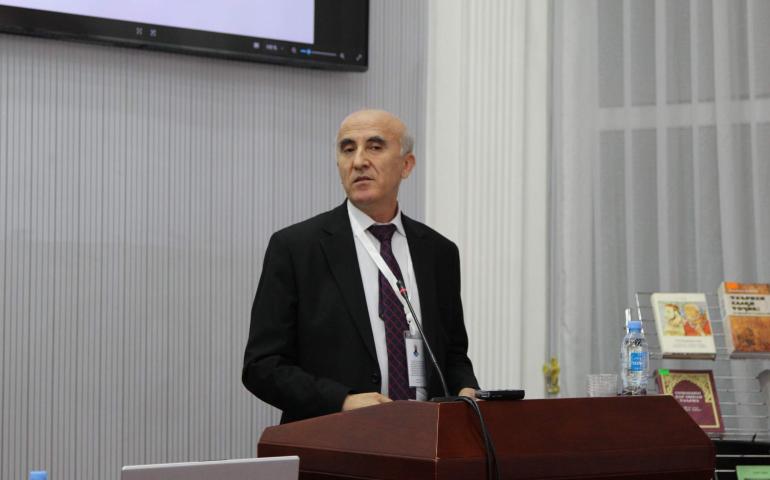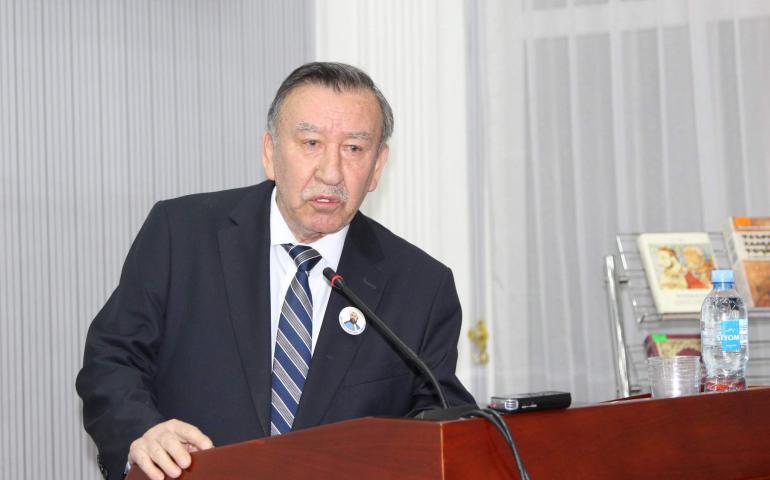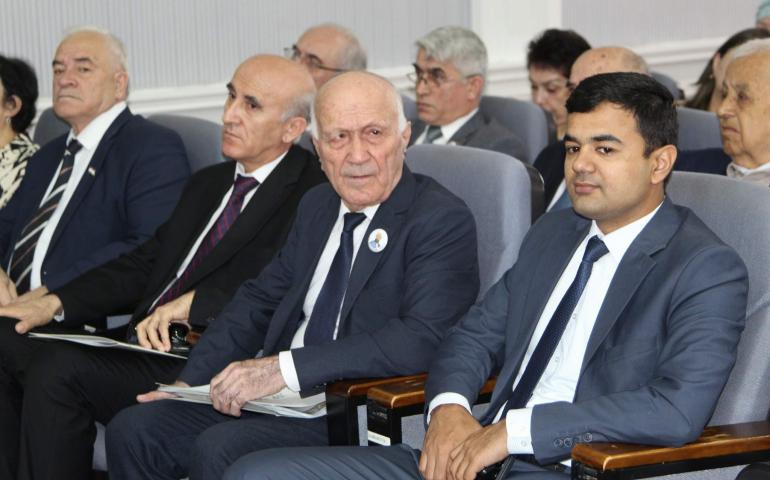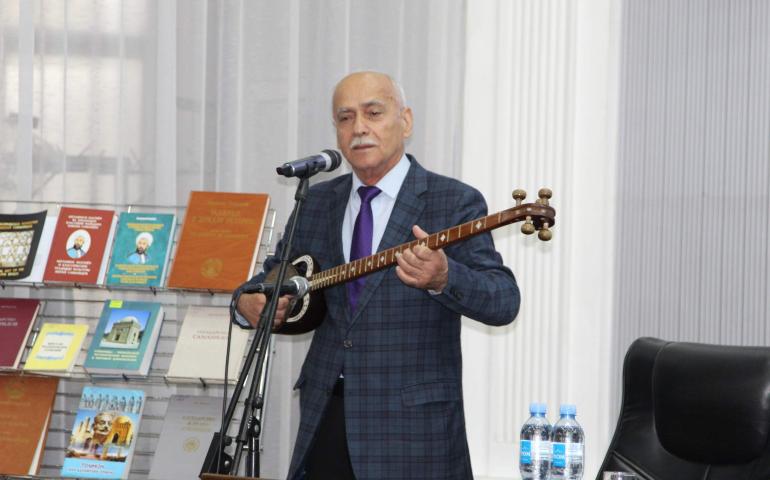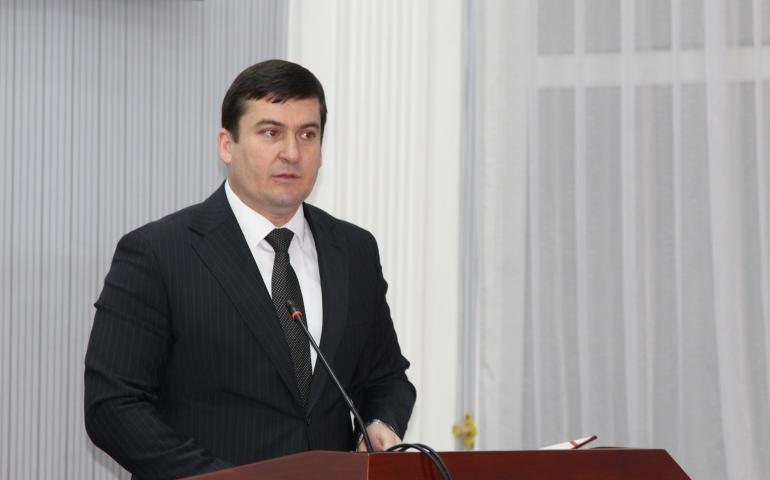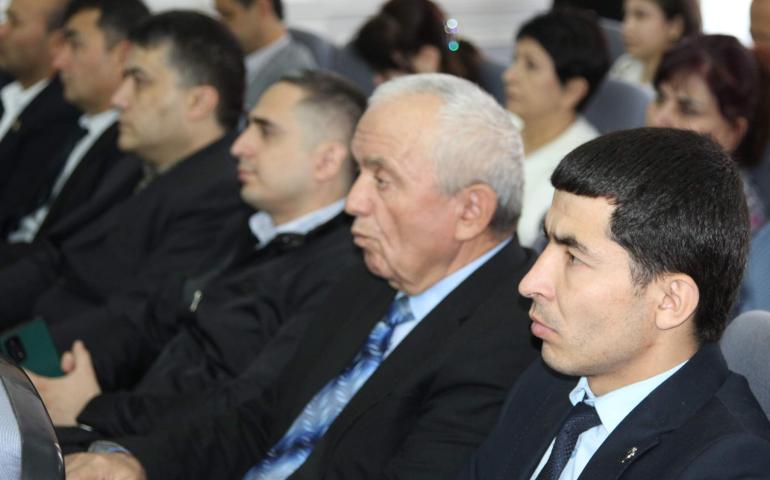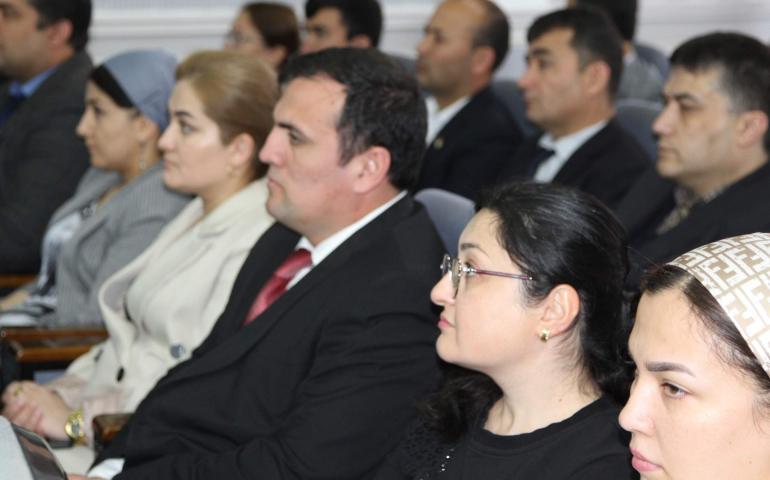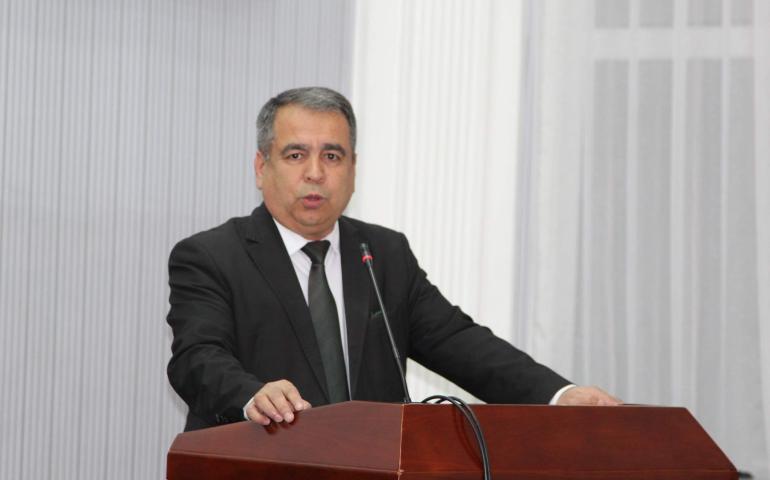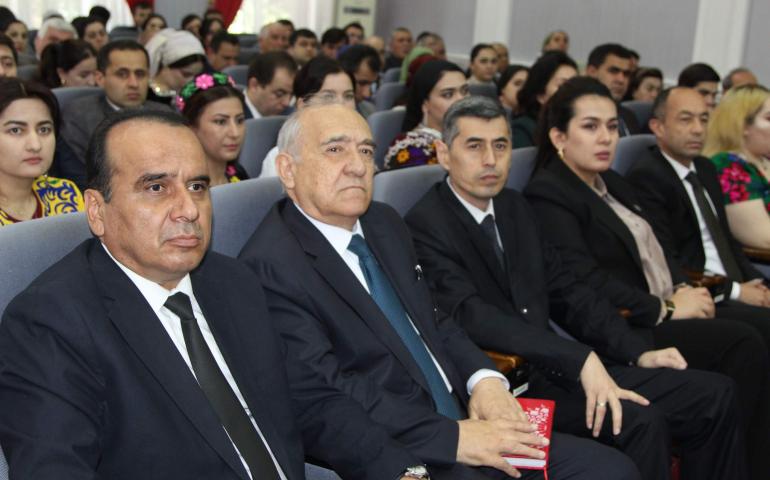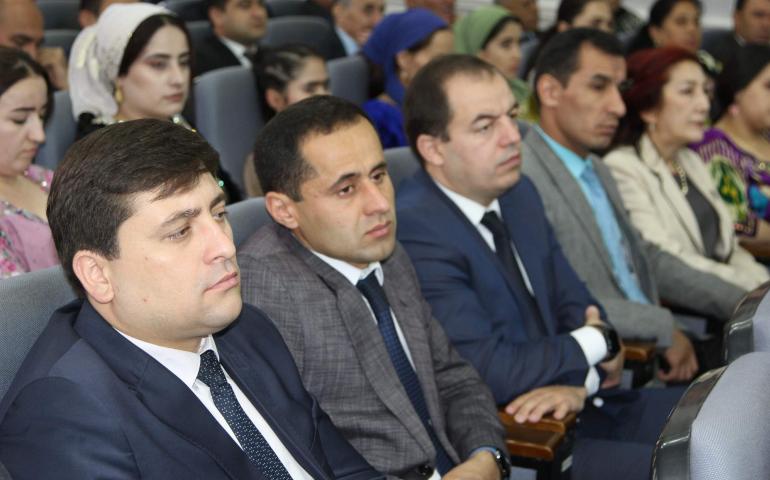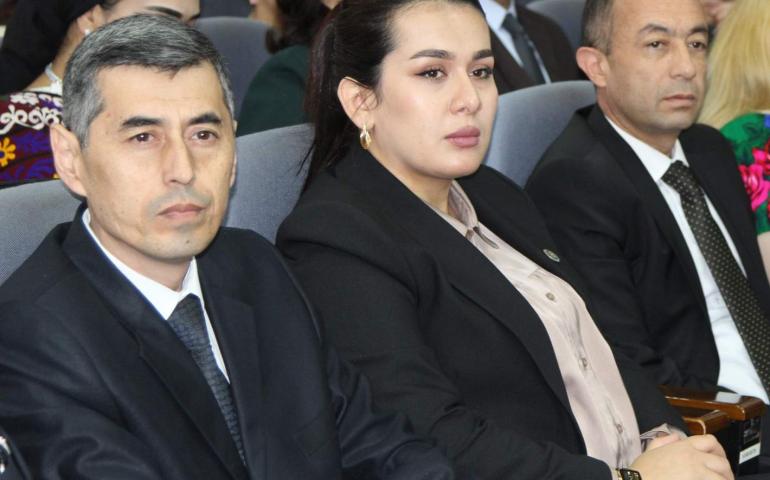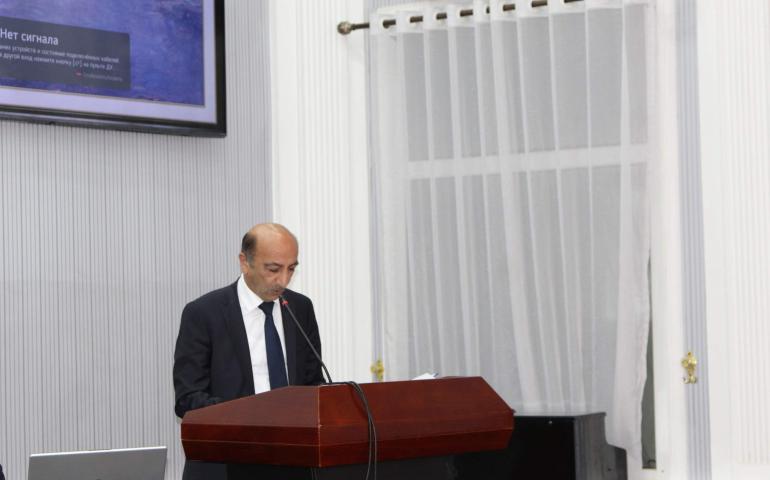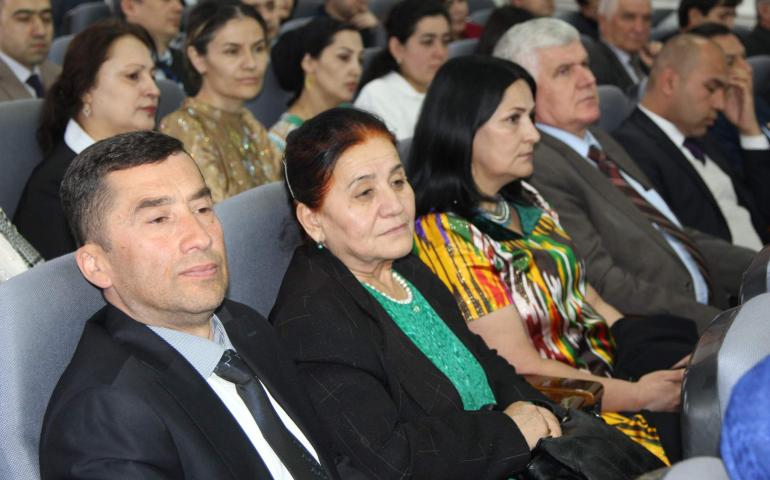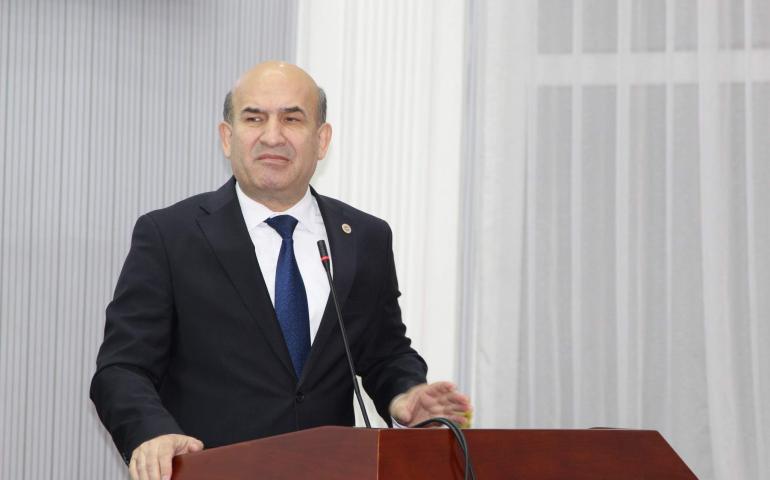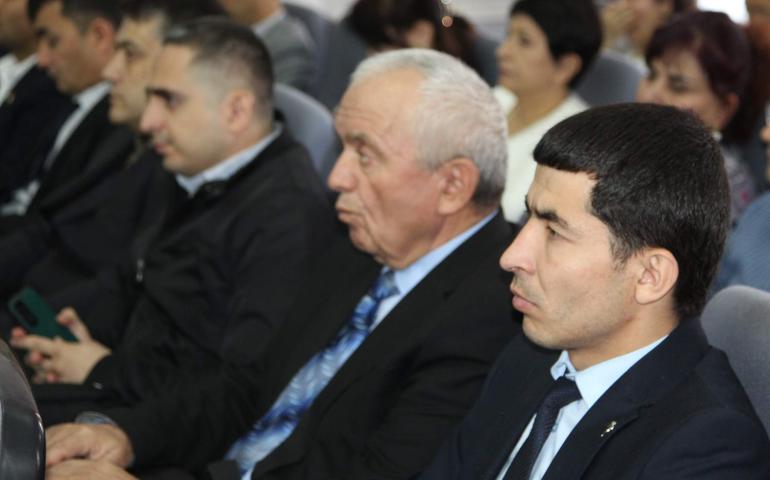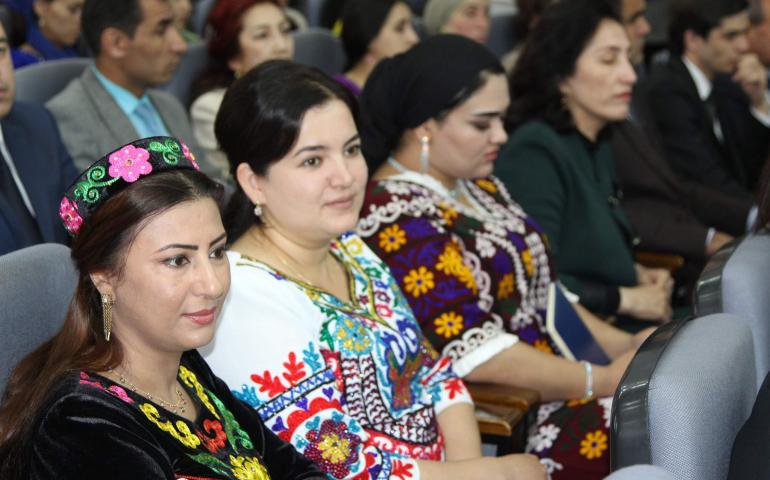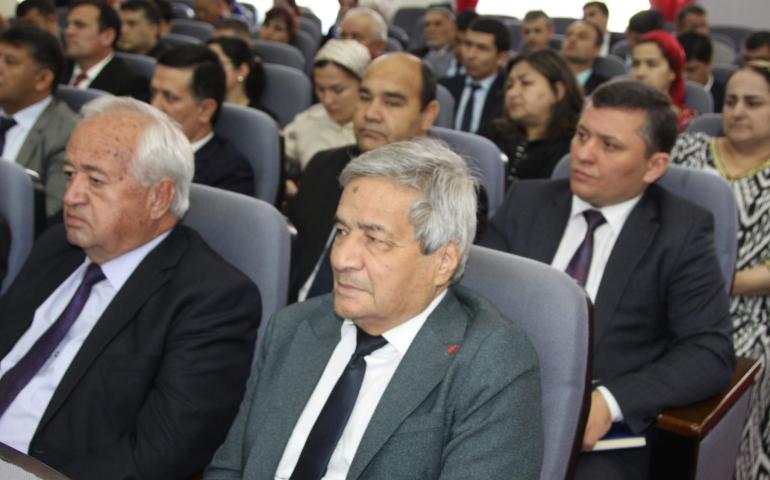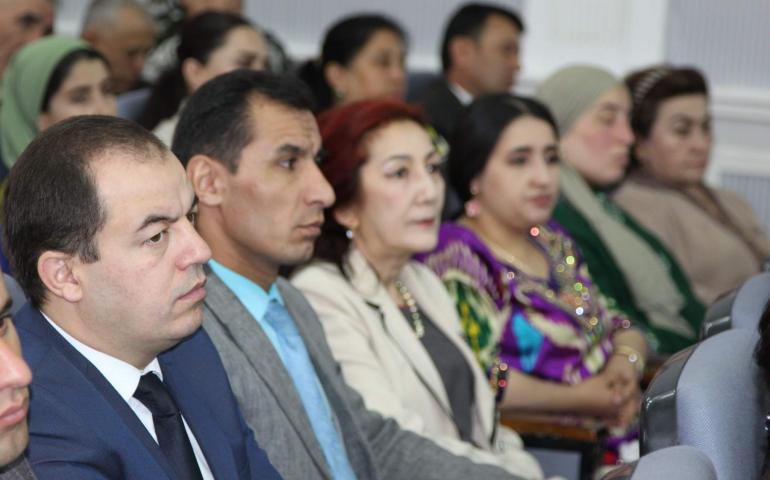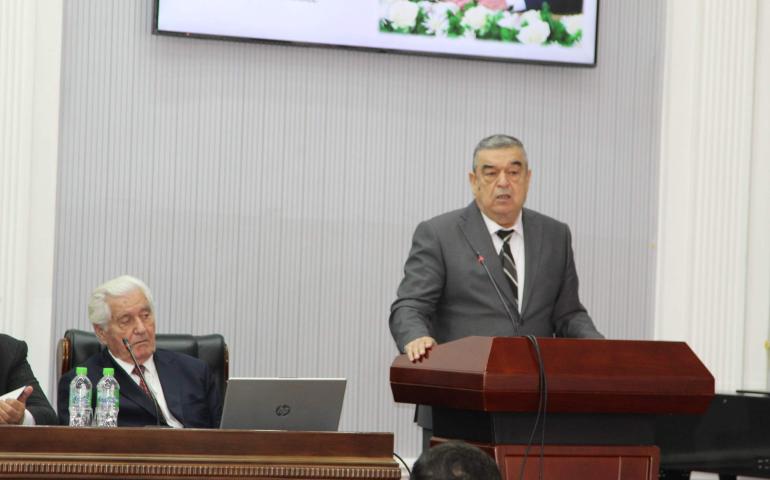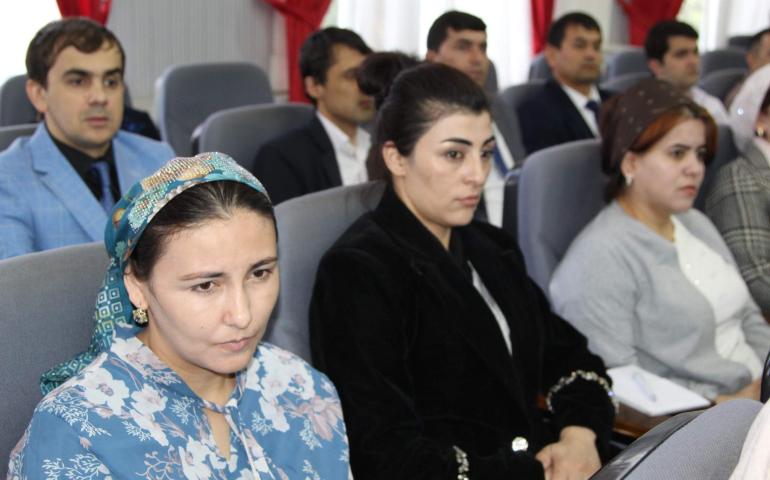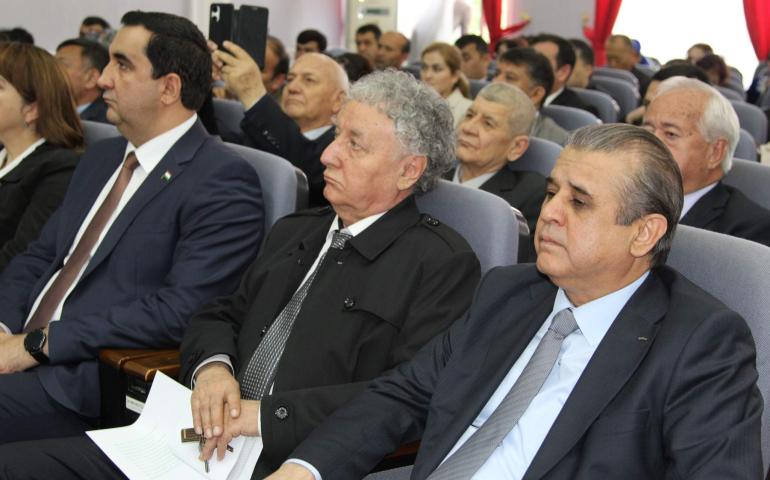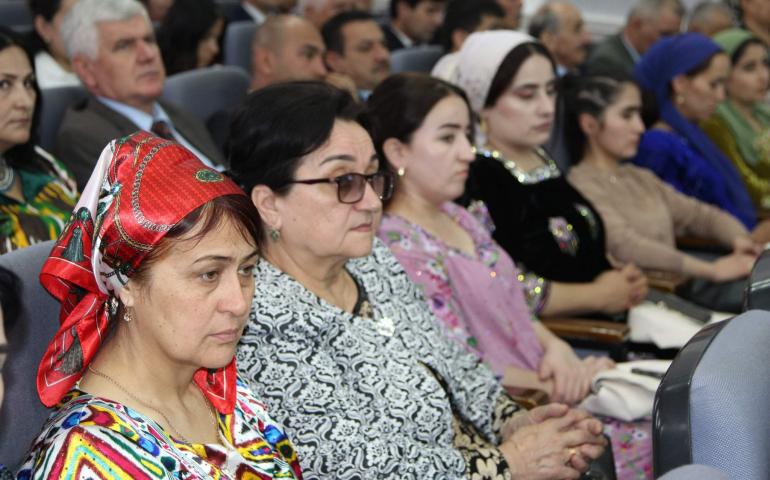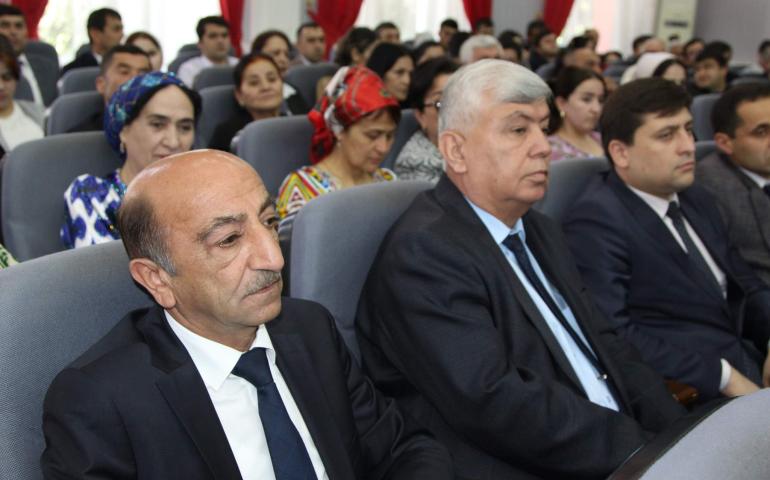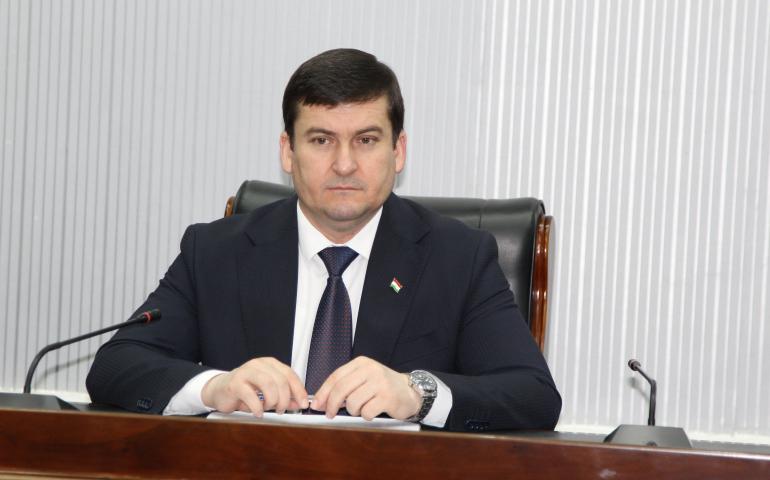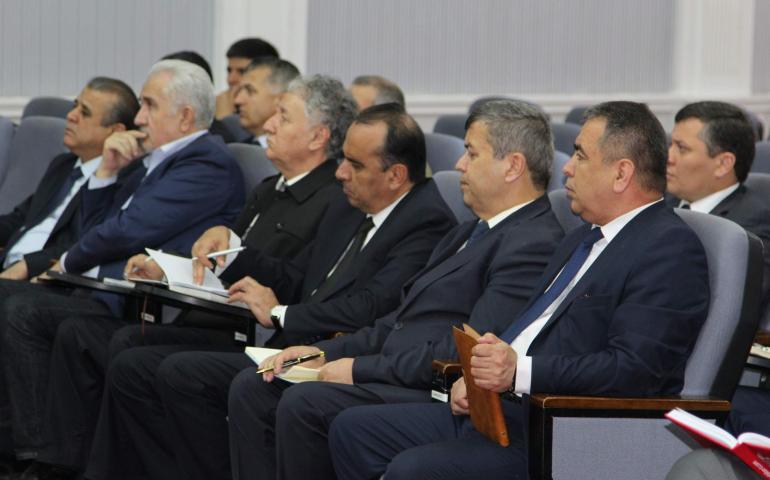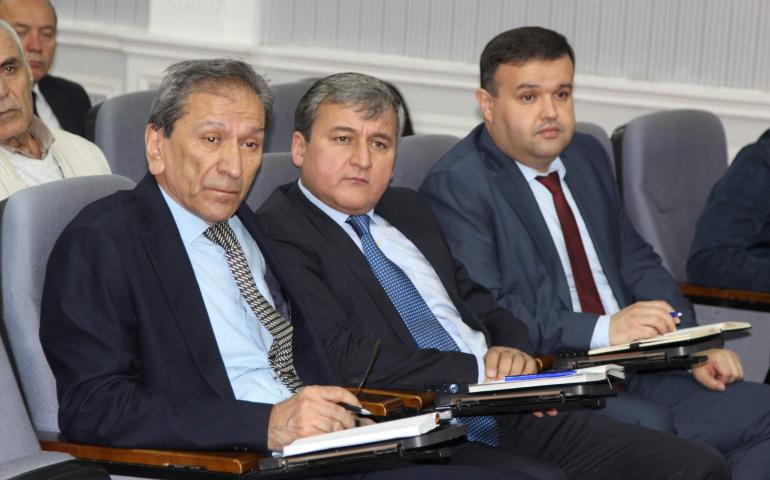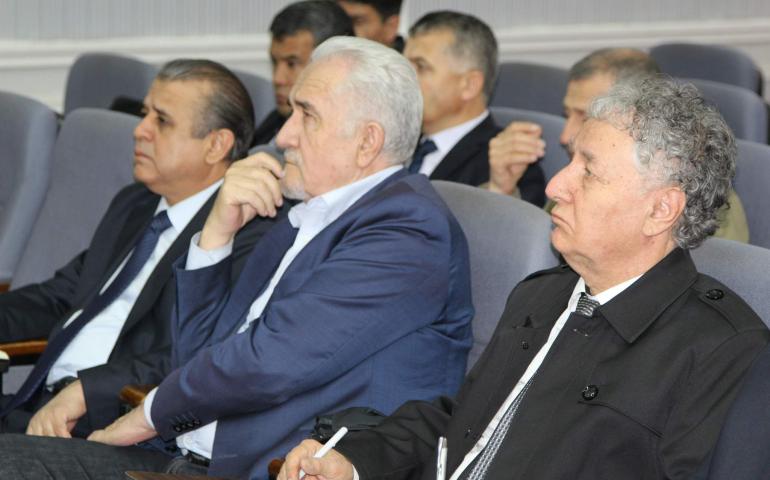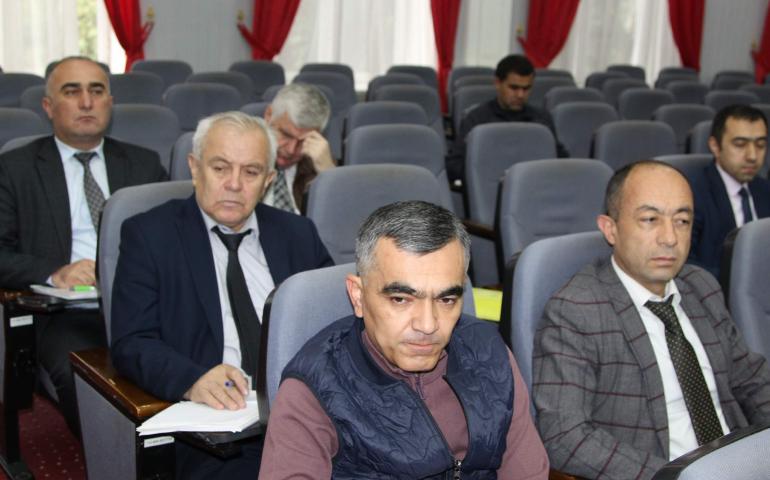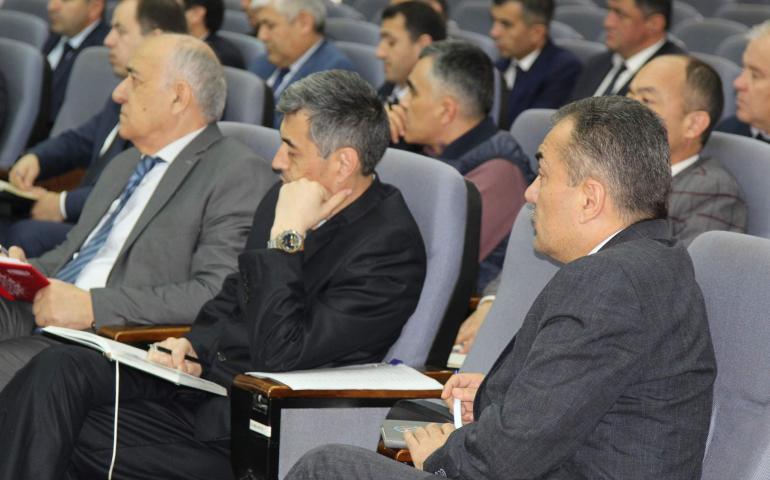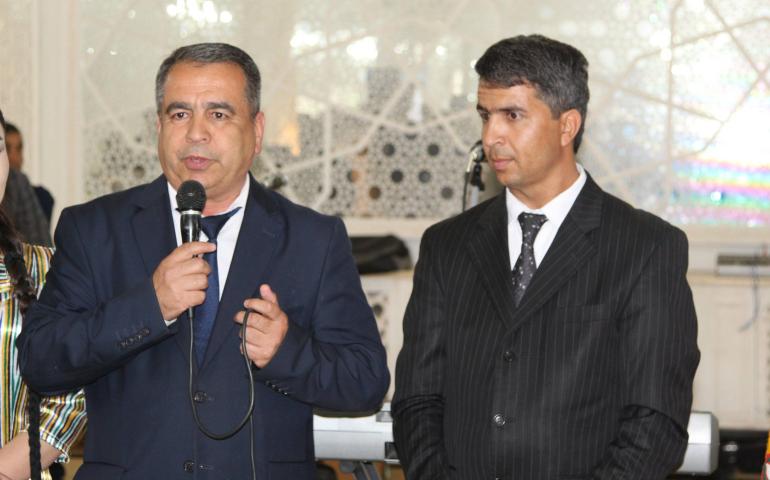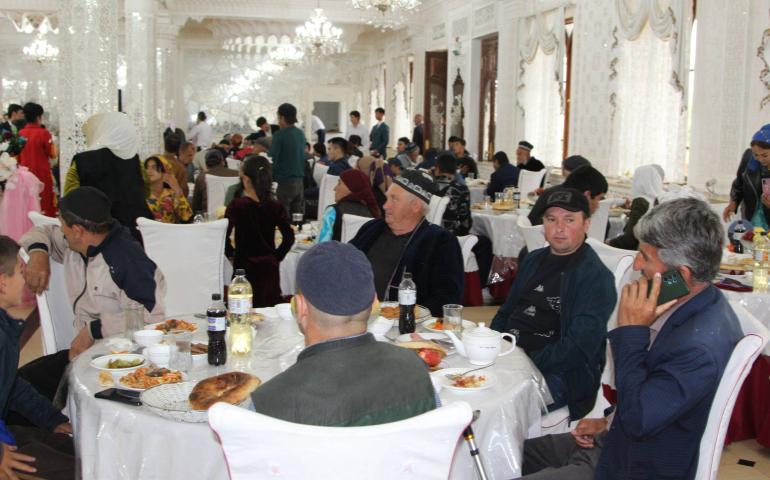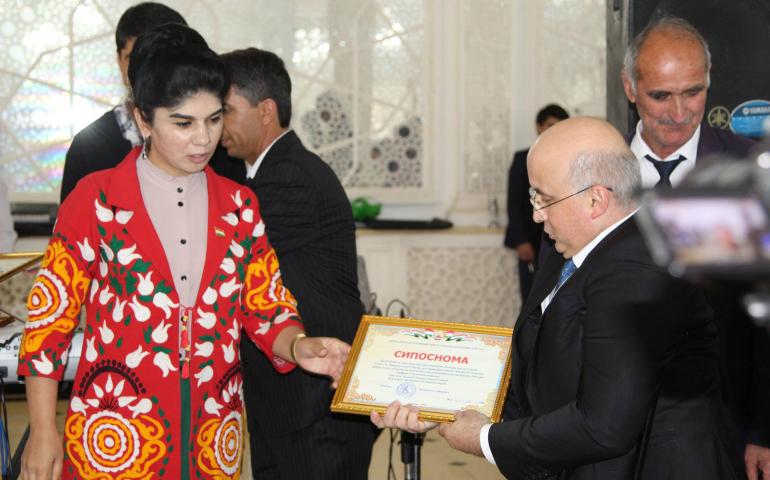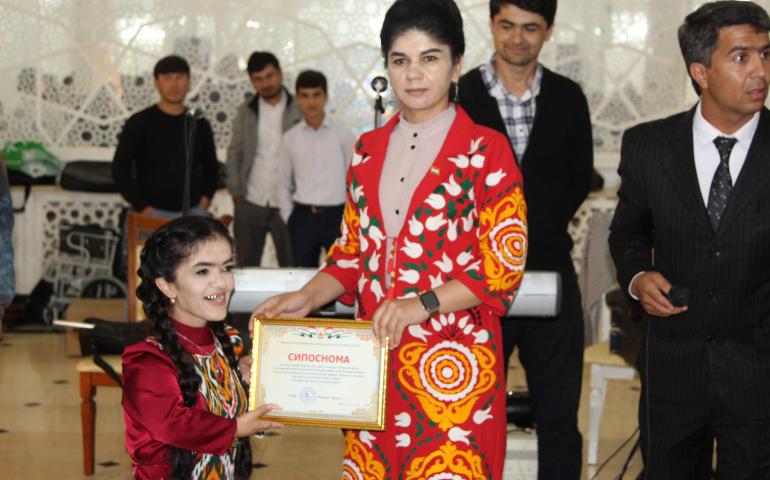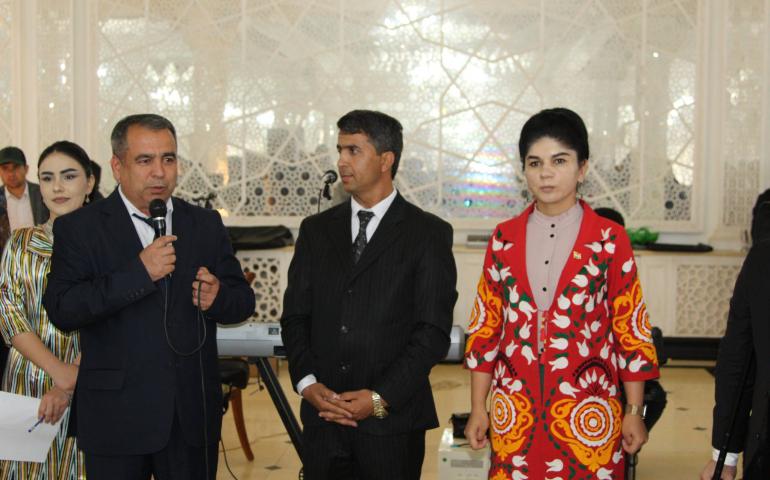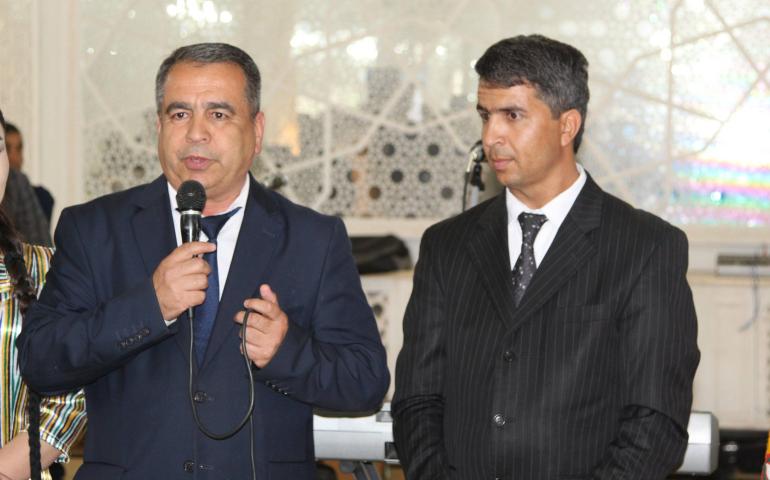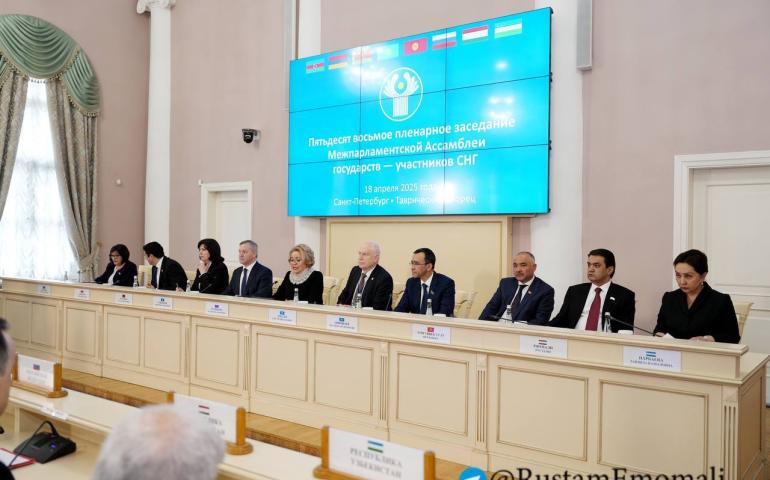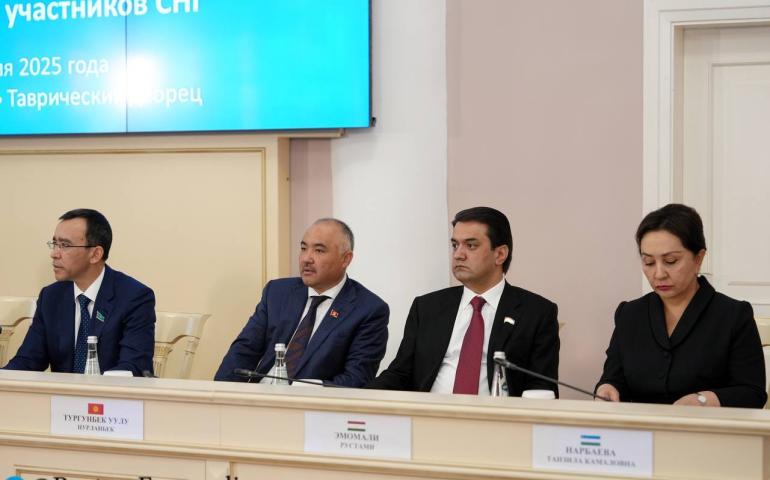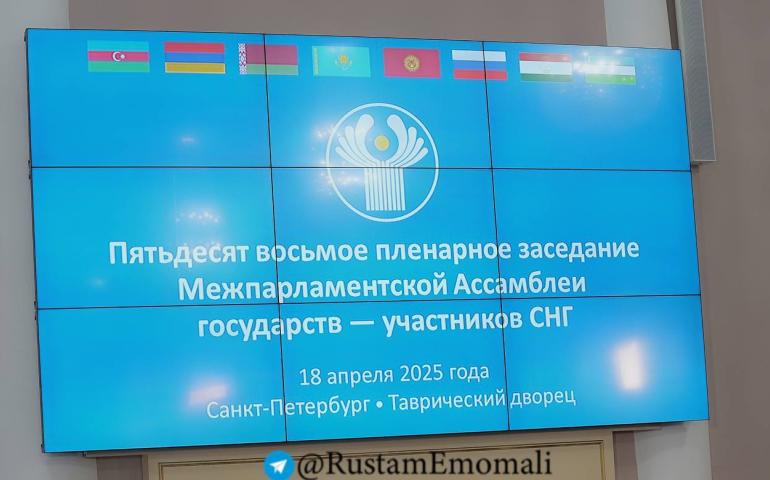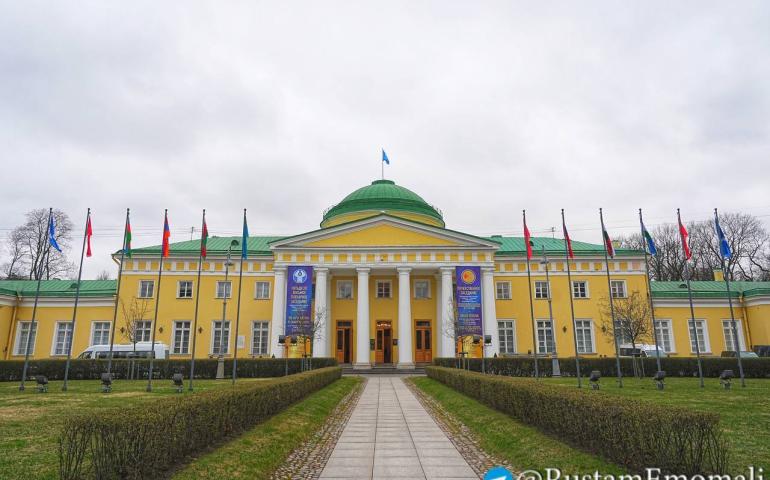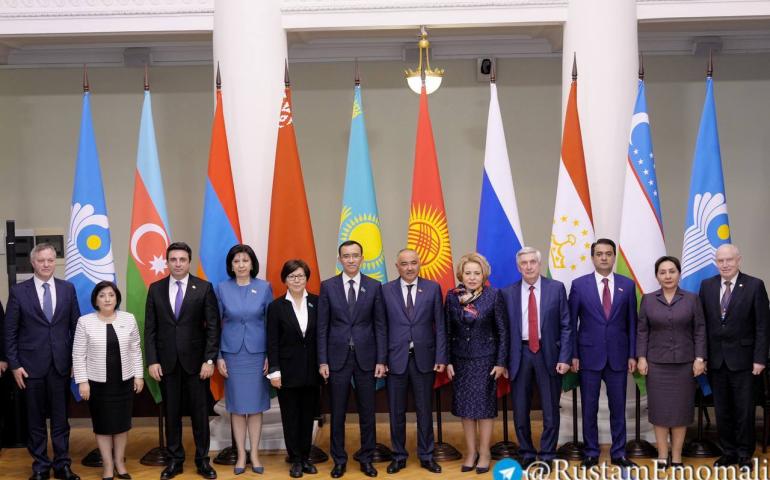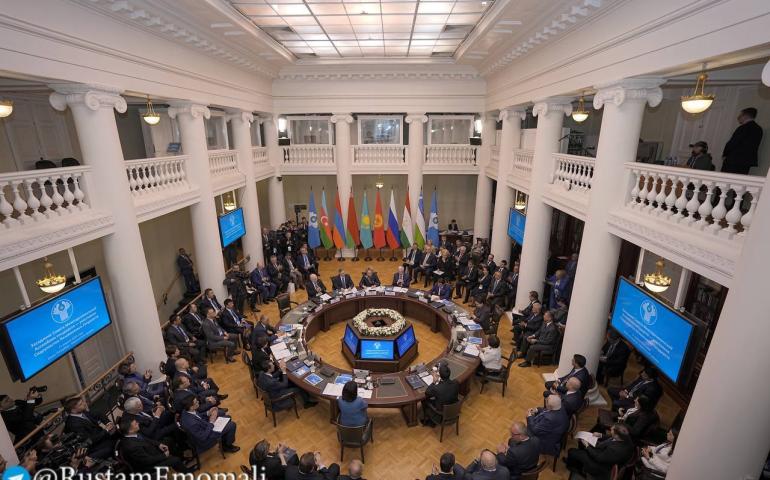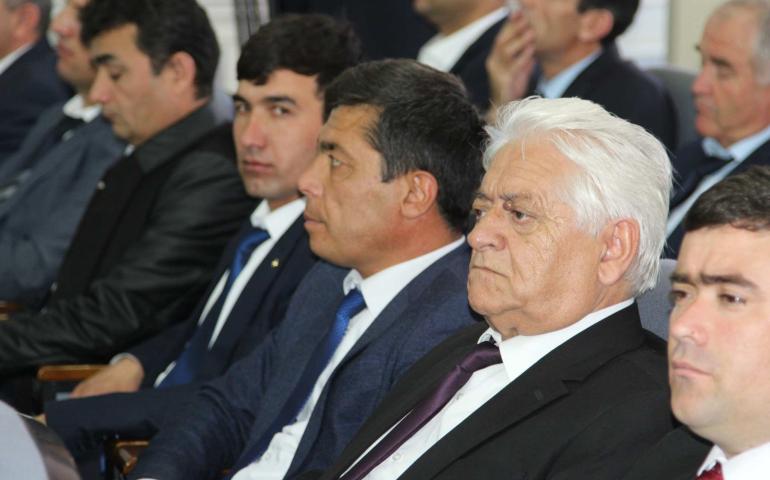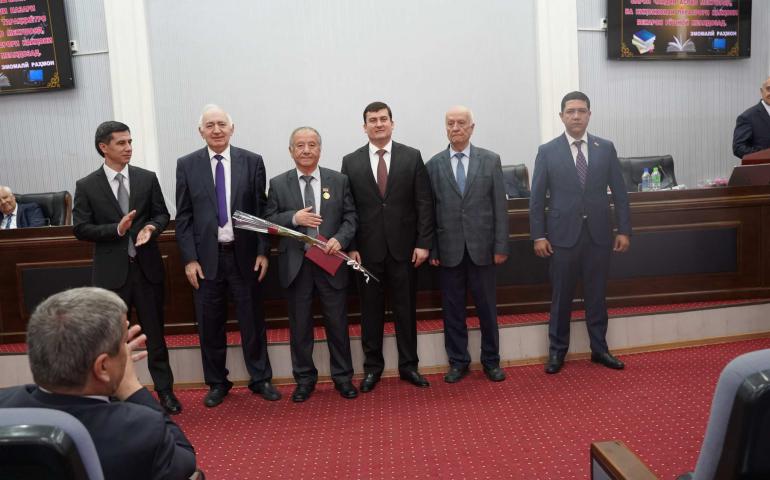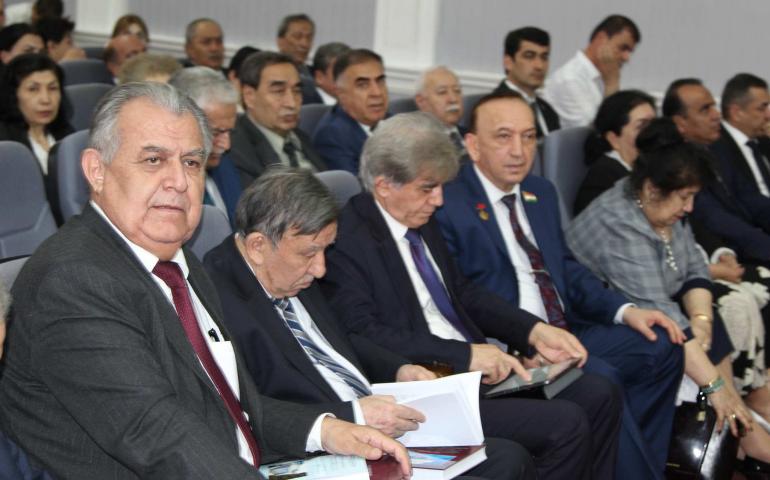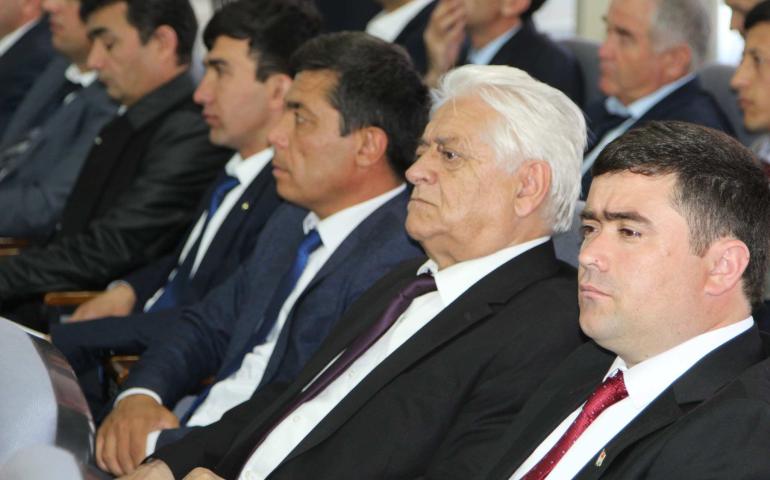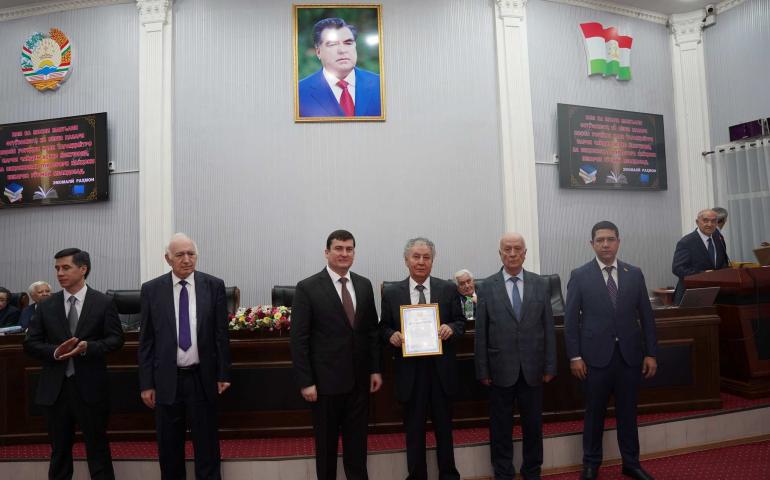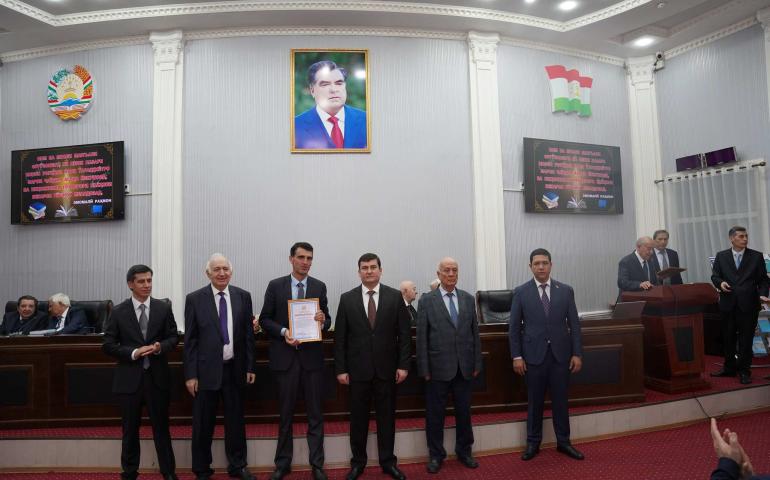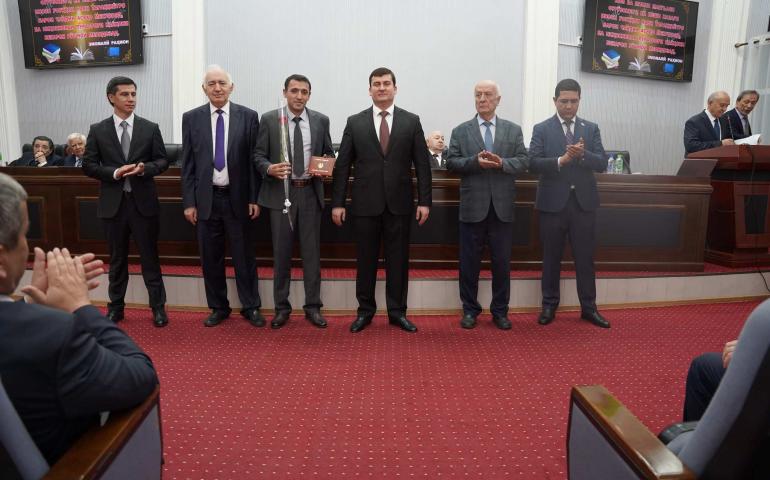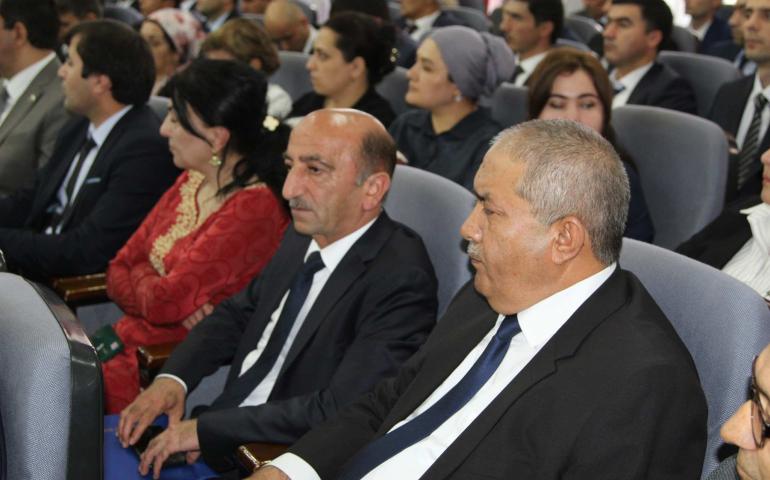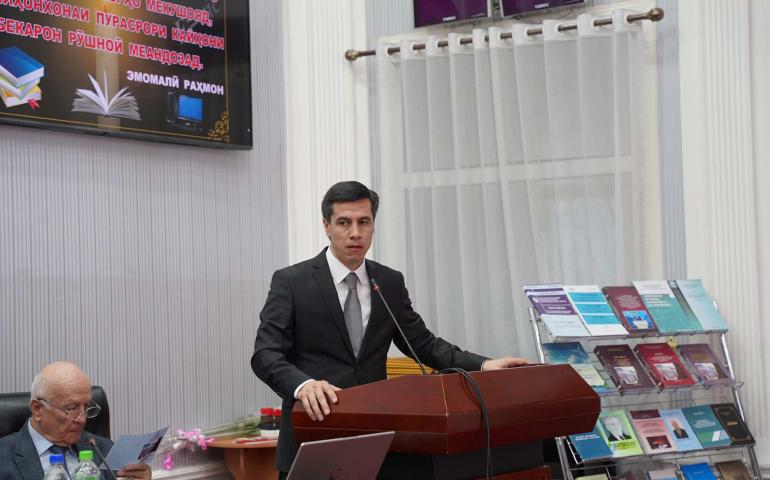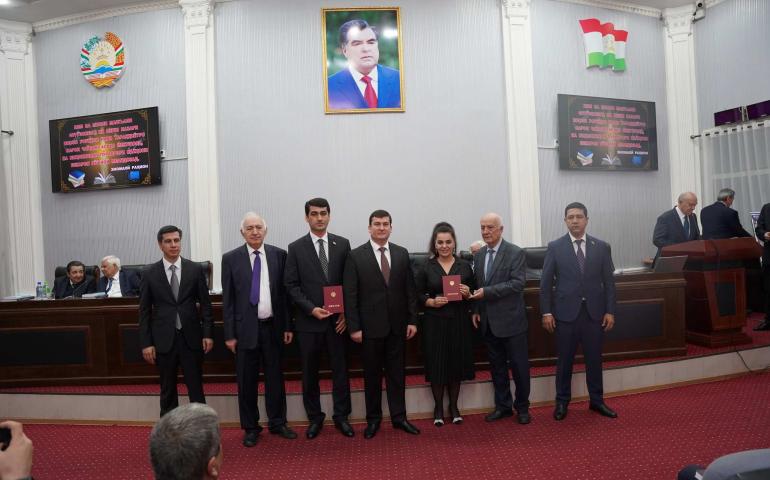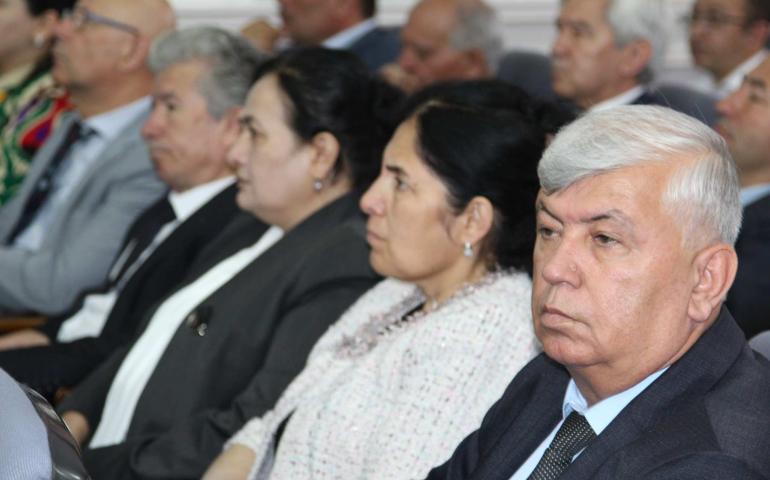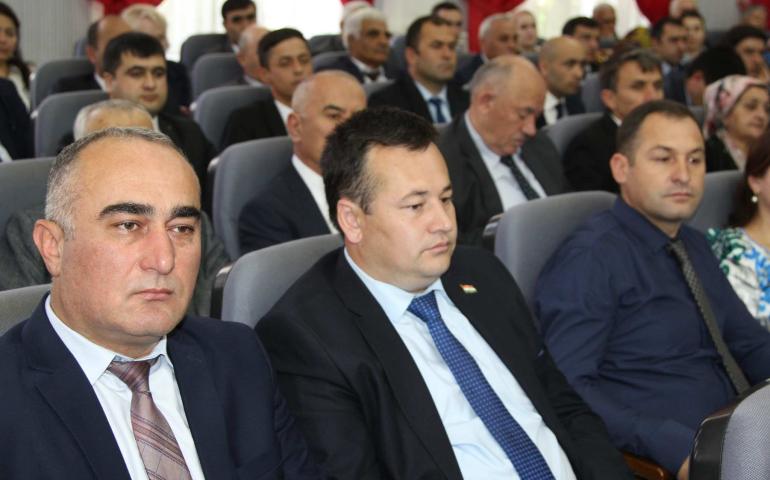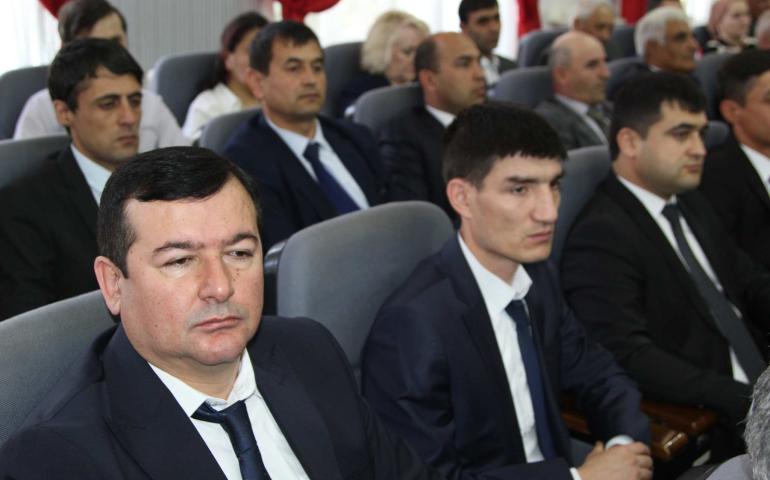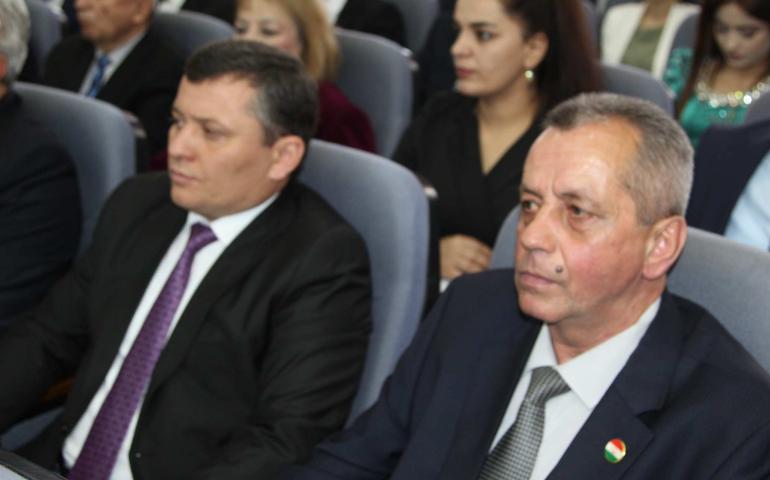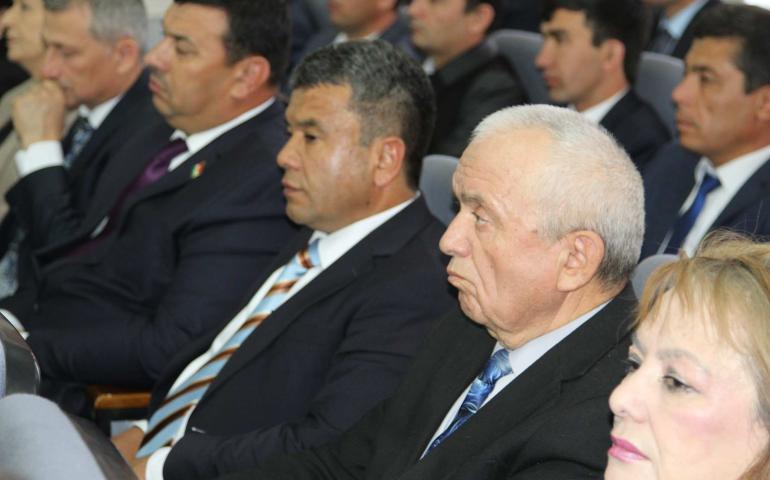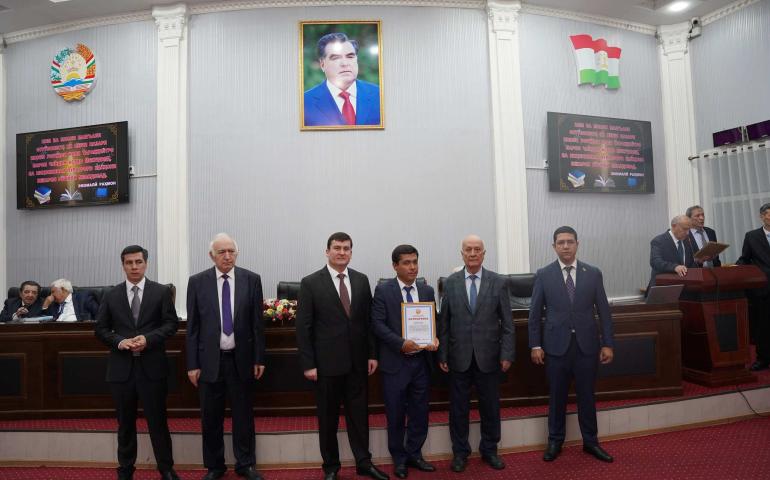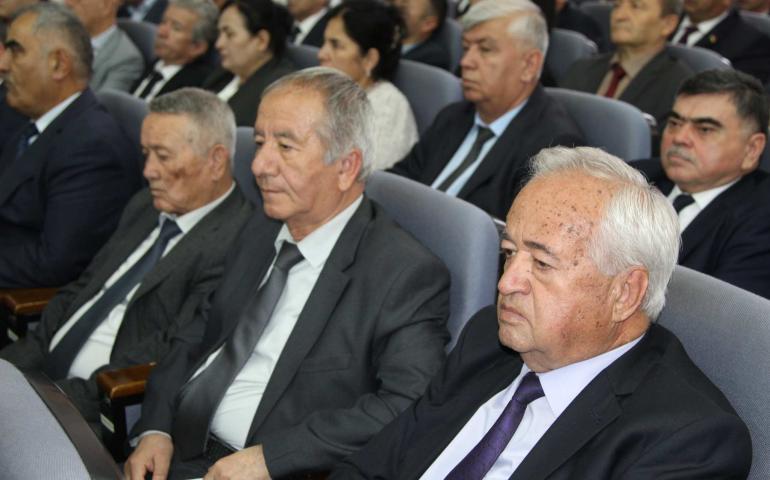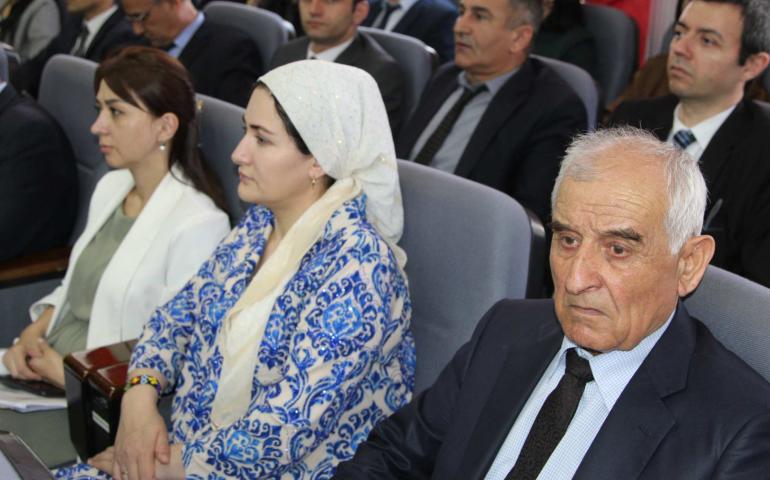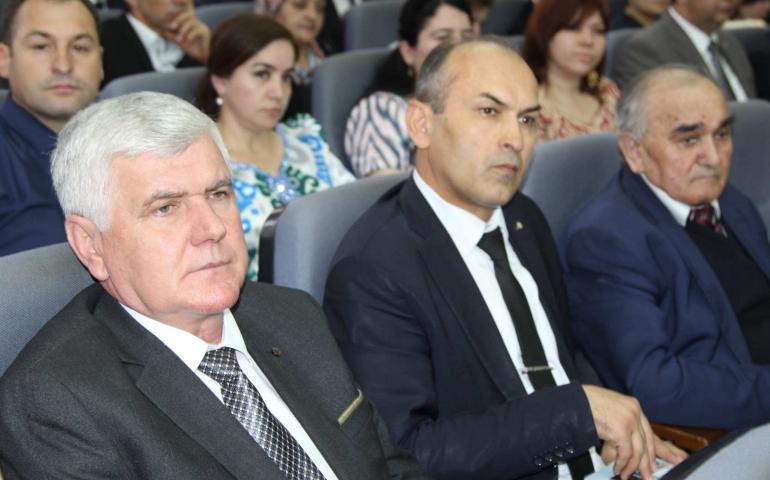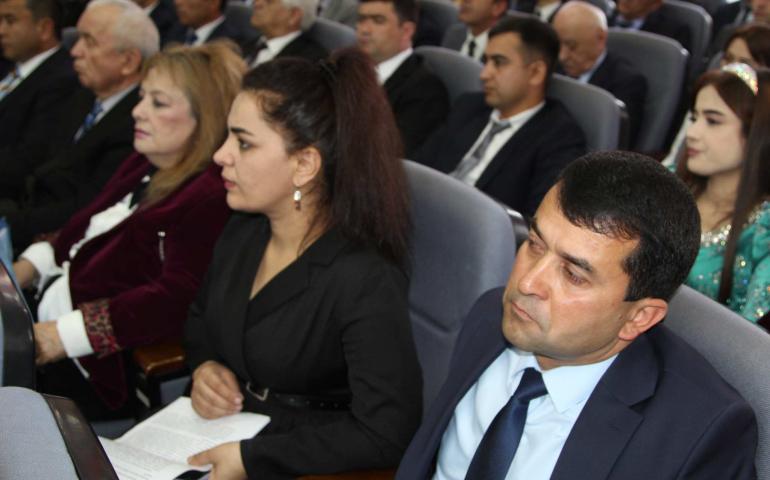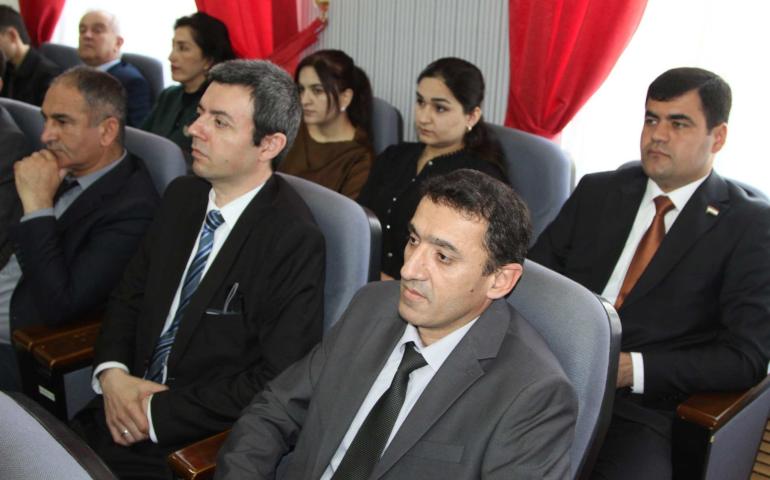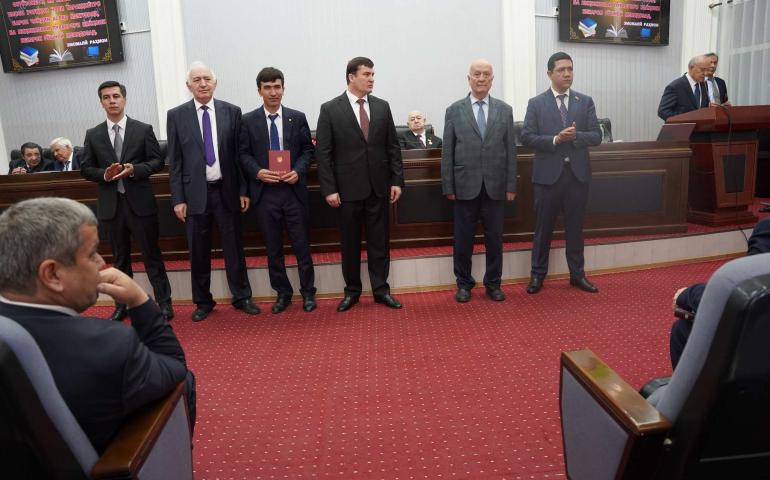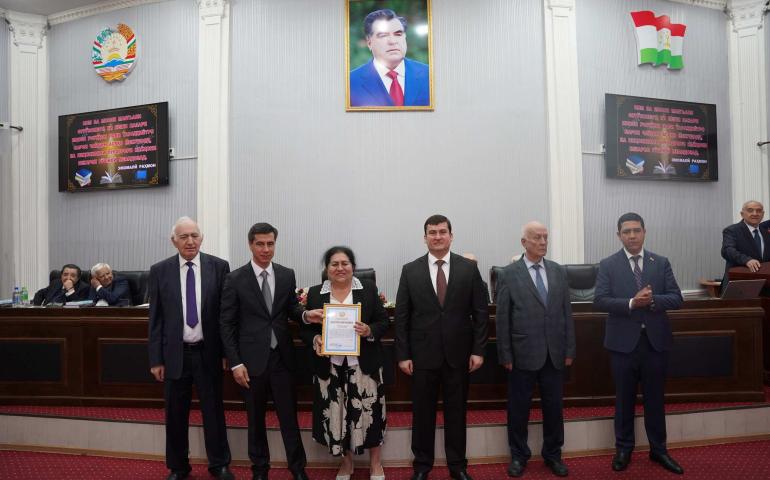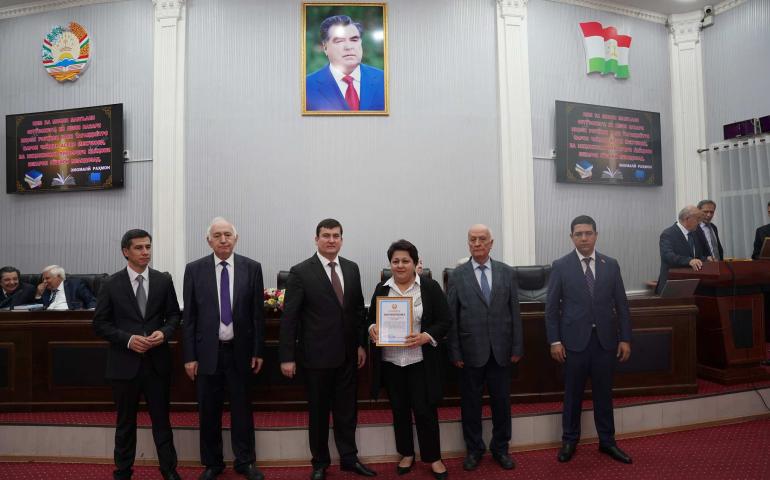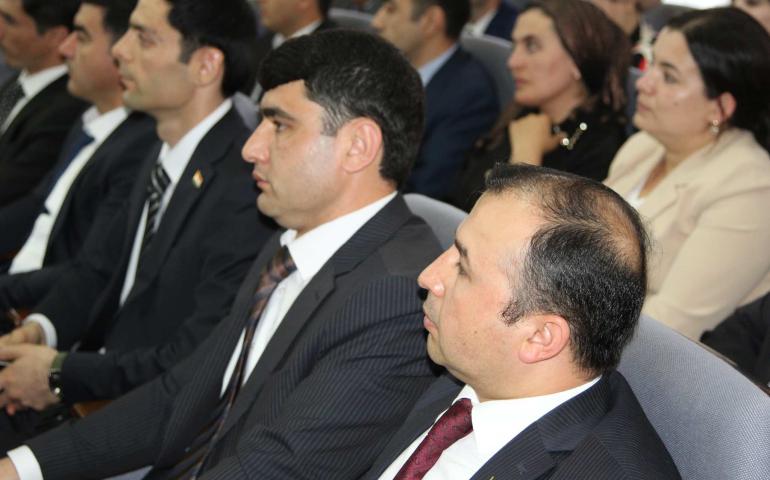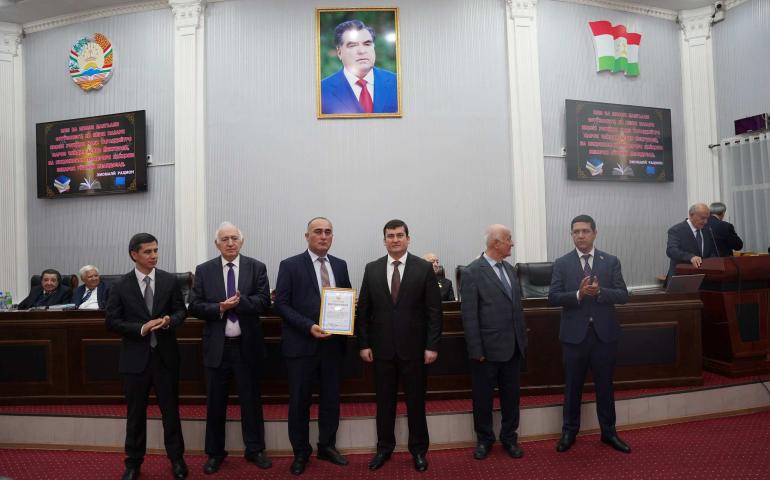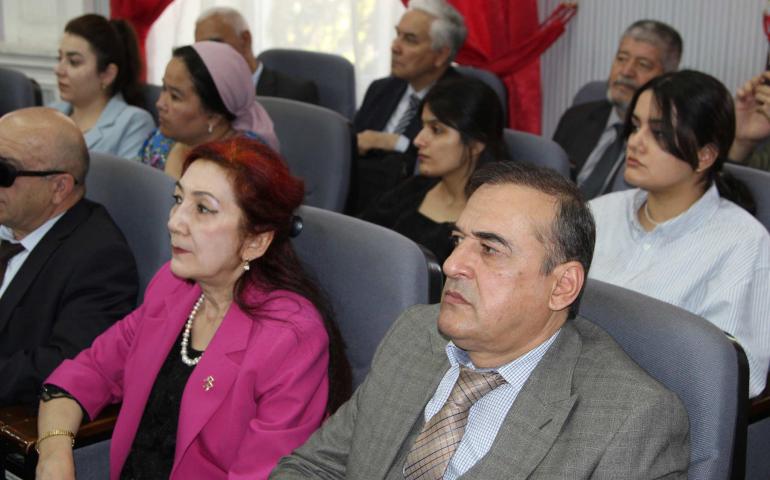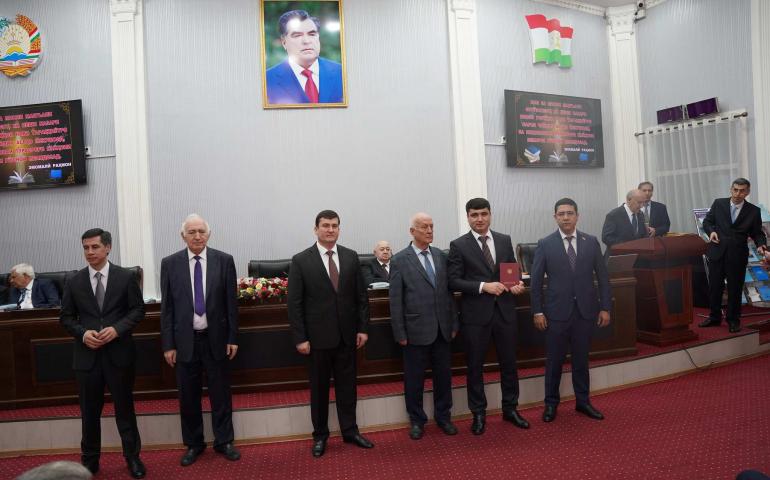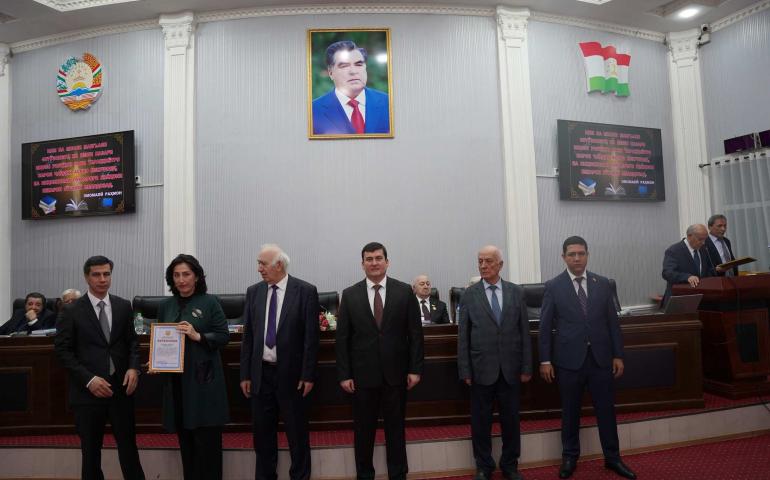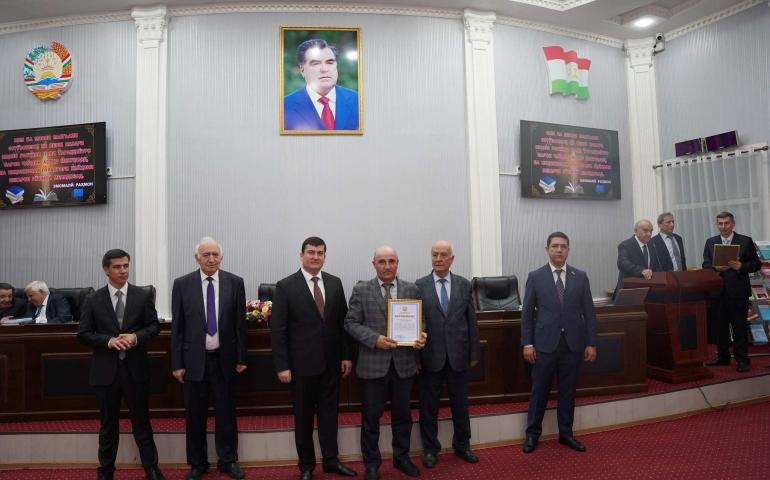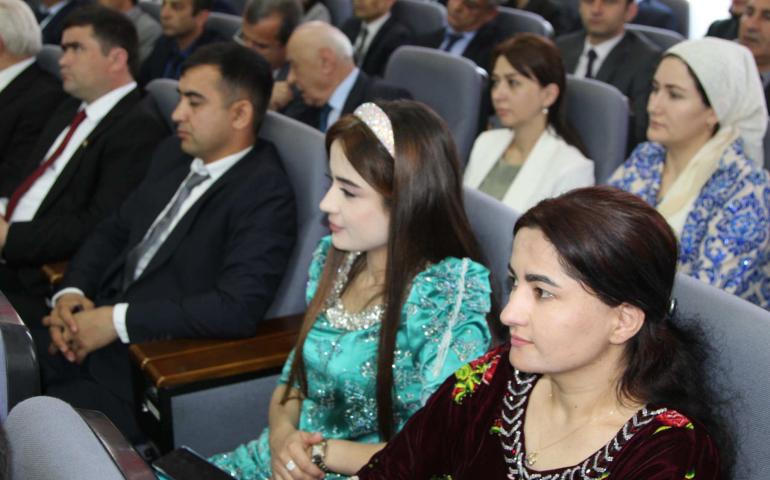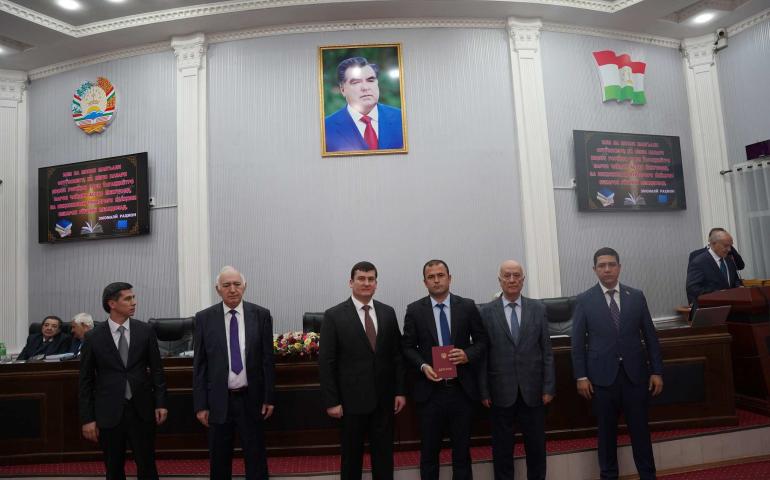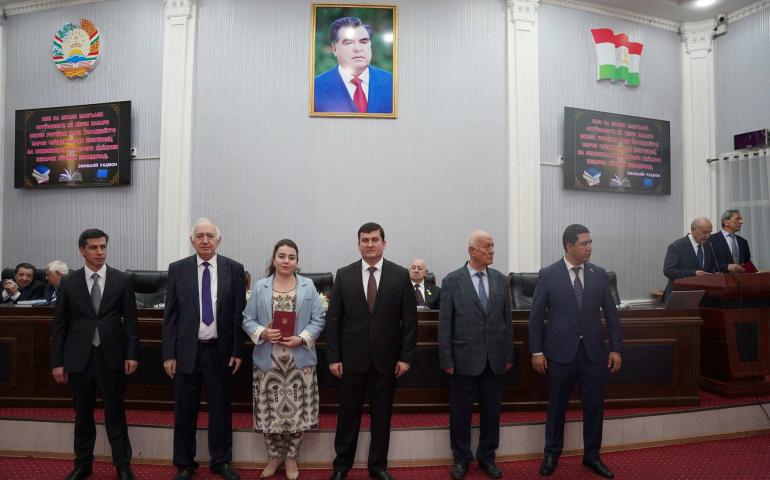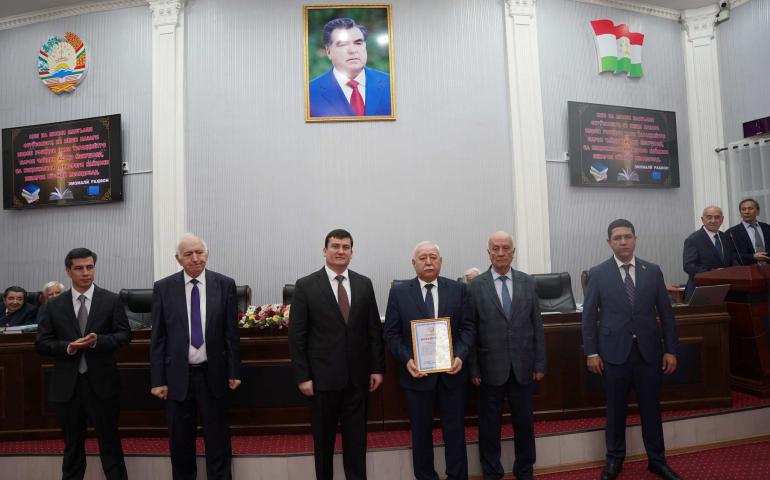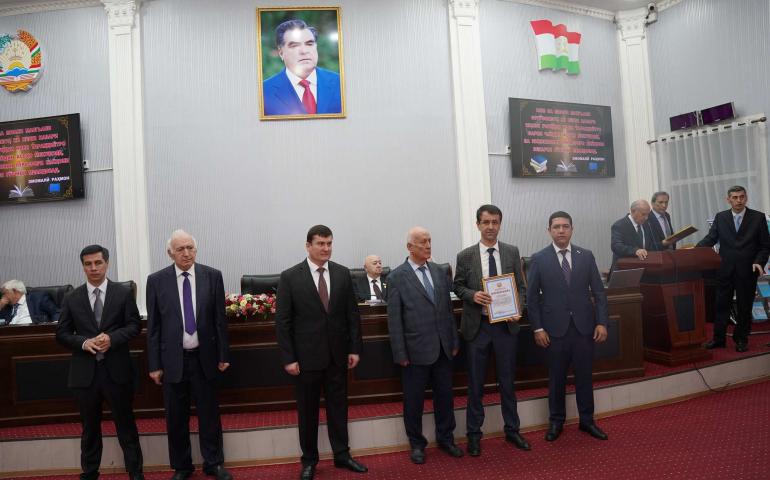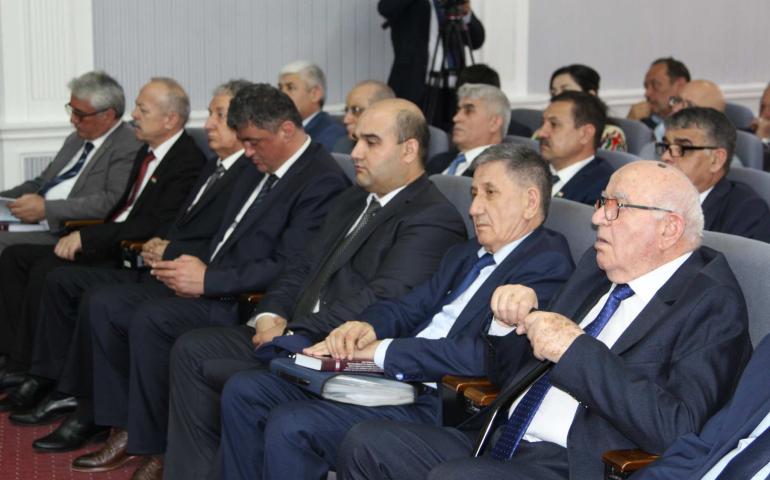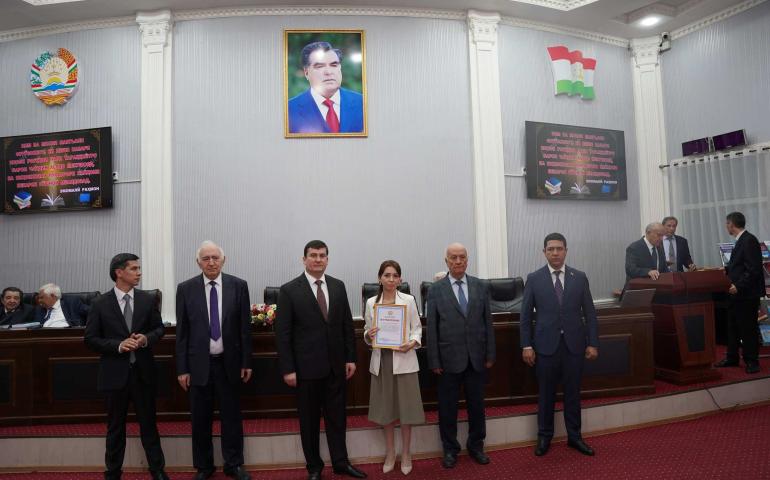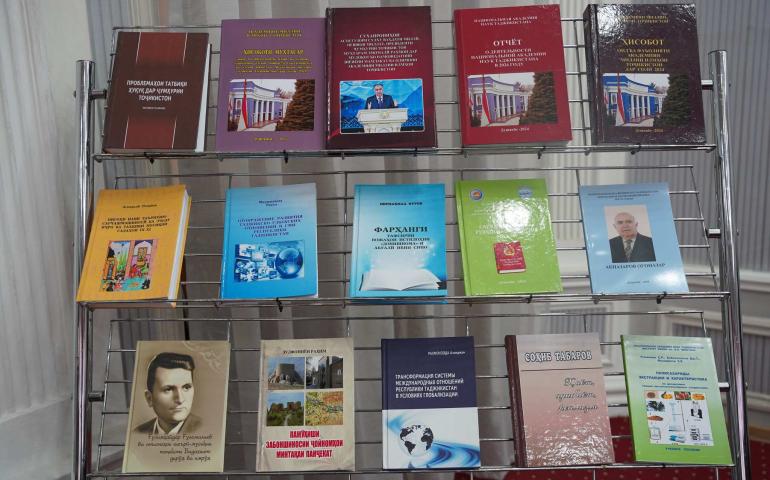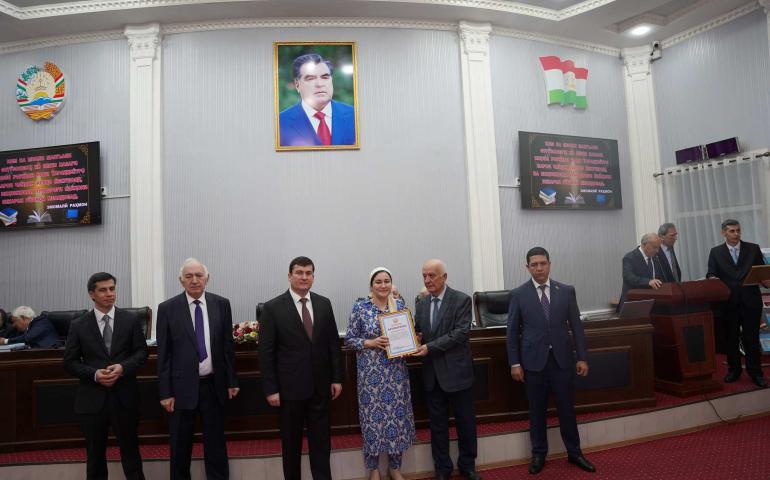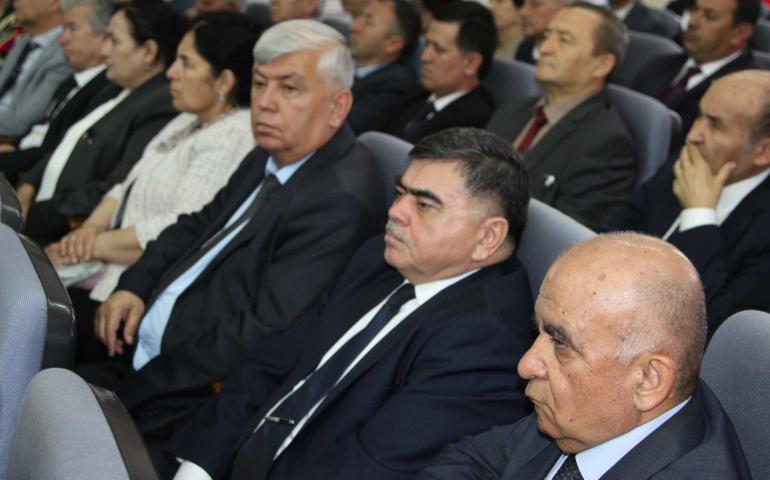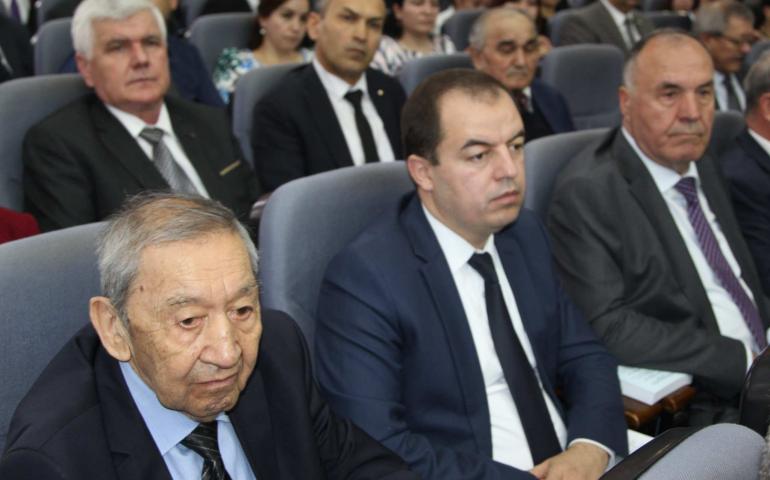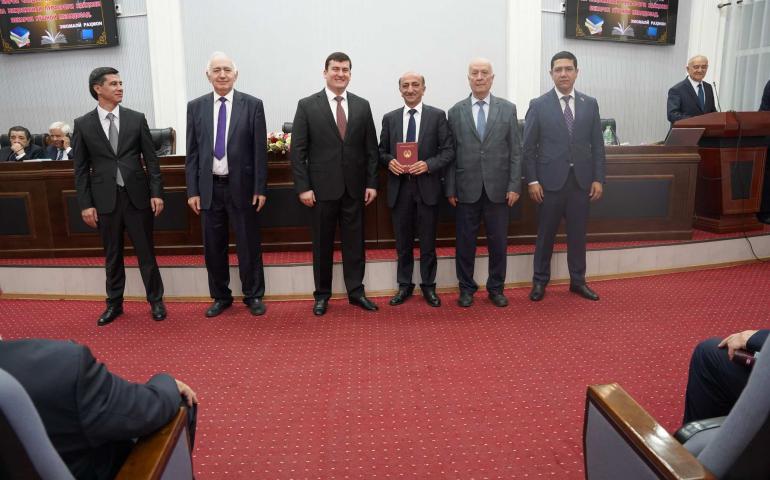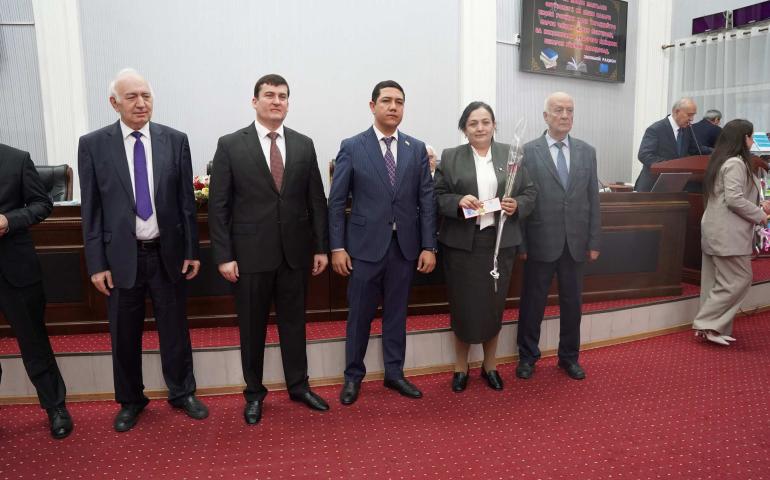
PRESIDENT OF THE NATIONAL ACADEMY OF SCIENCES OF TAJIKISTAN ELECTED VICE PRESIDENT AND ACADEMICIAN OF THE ASIAN ACADEMY OF SCIENCES
During the First General Assembly of the Asian Academy of Sciences (AASc), held in Hong Kong of the People’s Republic of China, the President of the National Academy of Sciences of Tajikistan, Academician Khushvakhtzoda Qobiljon Khushvakht, was elected Vice President and Academician of the Asian Academy of Sciences.
This historic election stands as evidence of the global recognition of the significant contribution and scientific authority of Tajik scholars in the advancement of science and international research. It also reflects that Tajikistan is acknowledged in the scientific space of Asia and the world as a country with a strong scientific foundation and highly qualified scholars.
The election of the President of the National Academy of Sciences of Tajikistan, Academician Khushvakhtzoda Qobiljon Khushvakht, to a leadership position in the Asian Academy of Sciences opens new opportunities for expanding scientific cooperation between Tajikistan and Asian countries, as well as for implementing joint research programs and strategic scientific initiatives.
It should be noted that the General Assembly was attended by 121 delegates from various countries, including China, Russia (with representatives from the Republic of Tatarstan, the Chechen Republic, the Republic of Dagestan, and the Republic of Bashkortostan); India, Japan, Turkey, Azerbaijan, Georgia, Kazakhstan, Tajikistan, Uzbekistan, Kyrgyzstan, Pakistan, as well as non-Asian countries such as the United States, France, Greece, Moldova, and Belarus. A total of 97 delegates took part in the election, selecting the Academy’s leadership as well as full and associate members.
This election is of exceptional importance for the development of a unified scientific space and the integration of Asian scholars, and it represents recognition of the contribution of Tajikistan and its scientists at both regional and international levels.
It is noteworthy that the Asian Academy of Sciences is the only scientific institution established at the regional and international levels to unite Asian scholars, develop scientific research, and expand strategic cooperation among the countries of the Asian continent, bringing together all scientific institutions of the region.
MEMORANDUM OF UNDERSTANDING BETWEEN THE NATIONAL ACADEMY OF SCIENCES OF TAJIKISTAN AND THE VATICAN APOSTOLIC ARCHIVE AND VATICAN APOSTOLIC LIBRARY
Today, April 23, the President of the National Academy of Sciences of Tajikistan, an associated member of the National Academy of Sciences of Tajikistan, Khushvakhtzoda Qobiljon Khushvakht, met with representatives of the Vatican Apostolic Archives and the Vatican Apostolic Library.
During the meeting, the parties signed a Memorandum of Understanding between the National Academy of Sciences of Tajikistan and the Vatican Apostolic Archives and the Vatican Apostolic Library, which will further study the historical and cultural heritage of the Republic of Tajikistan, preserved in the collections of the Holy See.
During the meeting, it was noted that the Vatican Apostolic Archives, which contain invaluable documents related to the government of the universal Church, and the Vatican Apostolic Library, which preserves a rich heritage of scientific and artistic books, will be placed at the disposal of Tajik scientists and researchers to conduct scientific research and education in this area.
Mentioned, that the Vatican Apostolic Archives and the Vatican Apostolic Library, within the framework of this memorandum of understanding, will strive to assist the National Academy of Sciences of Tajikistan in conducting a research project, and at the same time will contribute to the compilation of the series of books “Cultural Heritage of Great Khuroson”, dedicated to the 35th anniversary of the State Independence of the Republic of Tajikistan.
During the meeting, the parties agreed, within the framework of this agreement, to promote the scientific and research work of scientists from the National Academy of Sciences of Tajikistan in the Vatican Apostolic Archives and the Vatican Apostolic Library.
Today, April 22, an international scientific symposium was held in the Presidium Hall of the National Academy of Sciences of Tajikistan dedicated to the 1190th anniversary of the founder of the classical school of poetry and music of the Somonid era, Abulabbosi Bakhtiyor (834-920).
The conference was opened by vice president of the National Academy of Sciences of Tajikistan, Muhammaddovud Salomiyon, who expressed his thoughts on the content of the conference and the position of science, literature, culture, and music during the Somonid statehood.
In his introductory speech, the President of the National Academy of Sciences of Tajikistan, an associated member of the National Academy of Sciences of Tajikistan, Khushvakhtzoda Qobiljon Khushvakht, emphasized that the Leader of the Nation, the President of the Republic of Tajikistan, His Excellency Emomali Rahmon, expressed the following thoughts about the role and place of the first national state of the Tajiks, the Somonids, in the history of human civilization: “In fact, the era of culture, civilization, the development of science and literature, the glory and power of the Tajik state is associated with the reign of the Sоmonids, especially Shоh Ismoili Somoni. This era can be called a bright and proud stage of national civilization and the peak of statehood, the formation of prominent personalities, scientists, poets, and prominent state figures”.
Indeed, the material and spiritual civilization of the Somonid era holds a special place in the history of world civilization, and its brilliant figures, Hakim Tirmidhi, Abulabbasi Bakhtiyor, Abulabbasi Sarakhsi, Rudaki, Abumansur Daqiqi, Firdawsi, Abuali Ibn Sina, Aburayhan al-Biruni, and others, made a significant contribution to the formation and development of human civilization their works are inextricably linked to the historical process of the formation of the historical, scientific, philosophical, literary heritage, and the invaluable artistic wealth of the Tajik and Iranian peoples. During the Somonid era, history, science, language and literature, scientific and applied music, and the arts made great progress, the creative representatives of this golden age have brought to the stage a vast literary, historical, scientific, philosophical, artistic, and creative space that is fundamentally classic and enduring in human civilization.
Mentioned, that the creative and scientific figures of the Somonid era, including the period of scientific and administrative activity of the outstanding figure, the founder of the classical and cultural school, Abulabbasi Bakhtiyor, were a period of great prosperity in the history, nation, language, and the Renaissance of the civilization of the Tajiks and the peoples of Central Asia, the Middle East, and the Near East.
The creative representatives of the Somonid era were state-builders and cultural builders after the advent of Islam in the history of the East. In the systematic administrative structure of the state, they not only recreated the ancient system and traditions of the Aryan empires in a constructive manner, but also created a favorable atmosphere for creativity, promoting the development of the economy and trade, science and education, and art, bringing a broad impetus to progress.
In the continuation of the conference, along with Tajik researchers, as well as scholars and artisans from the United States, France, Canada, India, and Uzbekistan, who participated and spoke in person and in absentia, discussed pressing and under-researched issues of the history and civilization of the first centralized state of the Tajiks - the Somonids, and its prominent representative, the accomplished scholar, the founder of the classical school of poetry, music, and culture of the Somonid era, Abulabbos Bakhtiyor, and his time were discussed.
Today, April 21, a scientific and cultural conference entitled "Dushanbe - the Land of the Supreme Throne" was held in the hall of the Presidium of the National Academy of Sciences of Tajikistan, dedicated to the Day of the Capital of the Republic of Tajikistan, Dushanbe.
The Vice president of the National Academy of Sciences of Tajikistan, Muhammaddovud Salomiyon, opened the conference and welcomed the guests to this center of science and education.
In his opening remarks, the president of the National Academy of Sciences of Tajikistan, corresponding member of the NANT Khushvakhtzoda Qobiljon Khushvakht, congratulated those present on the occasion of the Day of our beloved capital, Dushanbe, and noted that today, Dushanbe, the capital of independent Tajikistan, has become a major scientific center and a venue for international and republican scientific events.
The factors that contributed to this are, first of all, related to the round-the-clock activity of the Founder of Peace and National Unity - Leader of the Nation, President of the Republic of Tajikistan, His Excellency Emomali Rahmon, in the direction of improving the capital of the country and the entire Tajikistan. At the same time, the activities of the city's leadership over the past few years have also strengthened the necessary opportunities for planning and holding various scientific events for the development of the capital.
It was noted that the largest scientific and research centers of the republic, including the National Academy of Sciences of Tajikistan, sectoral academies and the most prestigious higher professional educational institutions of the republic, as well as branches of such institutions from foreign countries, are located in the capital, and all of them have the necessary personnel and infrastructure to hold symposiums, conferences, seminars, and other scientific events.
At the same time, the city of Dushanbe today has a developing infrastructure, with new modern conference halls and hotels for their participants, which increasingly attracts organizers of international and national scientific events. Also, the continuous strengthening of the ability to connect to international communication networks and the development of air transport have made the city of Dushanbe a suitable venue for organizing scientific events that bring together scientists from different countries.
Then, the First Deputy Chairman of the People's Democratic Party of Tajikistan, Nematzoda Maliksho Mahmadsho, spoke about the development and progress of the city of Dushanbe and the efforts and efforts of the Mayor of Dushanbe, Rustam Emomali, and at the same time recalled the youth-oriented policy of the Founder of Peace and National Unity - Leader of the Nation, President of the Republic of Tajikistan, his Excellency Emomali Rahmon. Mentioned that today, under the creative leadership of the great Leader of the Nation, Honorable Emomali Rahmon, and with the constructive initiatives of the Mayor of Dushanbe, Honorable Rustam Emomali, the city of Dushanbe has completely changed its image and become a city of dreams. In general, the capital of Tajikistan - the city of Dushanbe is a mirror of the history and life of the Tajik nation and the Tajik state.
During the conference, scientists and employees of scientific and research institutions spoke in their reports about the history of the emergence, development, and progress of the city of Dushanbe in modern times.
As we know, on 15.04.2025 at 23:14:03.0 UTC and 16.04.2025 at 04:14:03.0 local time, an earthquake occurred. According to data from the Rogun seismic stations and the Institute of Geology, Earthquake-Resistant Construction and Seismology of the National Institute of National Atomic Energy, the earthquake occurred in the territory of the Islamic Republic of Afghanistan (coordinates 36.56 N 70.17 E) with a magnitude of 6.0 at a depth of 102 km.
After the earthquake in the Rasht Valley, the Government of the Republic of Tajikistan, in particular the Founder of Peace and National Unity- Leader of the Nation, His Excellency Emomali Rahmon, established a special headquarters to eliminate the consequences of the earthquake. On this basis, at the initiative of the president of the National Academy of Sciences of Tajikistan, corresponding member of NANT Khushvakhtzoda Qobiljon Khushvakht, the leadership of the Institute of Geology, Earthquake-Resistant Construction and Seismology of NIAT was included in the composition of this commission, as part of which officials were mobilized to the Rasht region and visited the area of continuous earthquakes.
Today, April 19, as part of this working meeting, with the participation of the President of the National Academy of Sciences of Tajikistan, Khushvakhtzoda Qobiljon Khushvakht, and a delegation of scientists and employees, the consequences of the earthquake in the Rasht Valley were discussed.At the beginning, Nosir Safaralizoda, Director of the Institute of Geology, Earthquake-Resistant Construction and Seismology of the National Academy of Sciences of Tajikistan, gave a detailed report on the time and place of the earthquake and its adverse consequences.
During the meeting the president of the National Academy of Sciences of Tajikistan, his Excellency Khushvakhtzoda Qobiljon Khushvakht regarding strengthening the activity of seismic stations and the Institute of Geology, Earthquake-Resistant Construction and Seismology of the National Institute ordered to the responsible staff.
ASSISTANCE OF THE PRESIDENT OF THE NATIONAL ACADEMY OF SCIENCES TO 300 DISABLED PEOPLE IN DANGARA DISTRICT
It is worth noting that extending a helping hand to orphans and adolescents with disabilities is considered a good human trait in the culture of our nation. All this care and support originates from the wise and humane policy of the Founder of Peace and National Unity - the Leader of the Nation, the President of the Republic of Tajikistan, Honorable Emomali Rahmon.
Today, April 18, following this wise policy of the Leader of the Nation, His Excellency Emomali Rahmon, at the initiative of the president of the National Academy of Sciences of Tajikistan, correspondng member of the National Academy of Sciences of Tajikistan, Khushvakhtzoda Qobiljon Khushvakht, assistance was provided to 300 disabled people in Dangara district.
It should be noted that this initiative was launched in honor of the international holiday of Navruz, and at the initiative of the president of the National Academy of Sciences of Tajikistan,
corresponding member of the National Academy of Sciences of Tajikistan, Khushvakhtzoda Qobiljon Khushvakht, a festive table and a colorful cultural program were organized for people with disabilities.
In addition, the Deputy Chairman of the Dangara District, Vice President of the National Academy of Sciences of Tajikistan Salomiyon Muhammaddovud, the Head of the Department of Master's Degree of the National Academy of Sciences of Tajikistan Qosimzoda Soleh, the Head of the Department of Foreign Languages under the Academy Board Saidzoda Halim Aziz, spoke about the support and charitable initiatives of the Leader of the Nation, Honorable Emomali Rahmon, for the disabled and adolescents with disabilities, and about the next initiative of the president of the National Academy of Sciences of Tajikistan, an associated member of the National Institute of National Education, Khushvakhtzoda Qobiljon Khushvakht.
Today, the Chairman of the Majlisi milli of Majlisi Oli of the Republic of Tajikistan, the Chairman of the city of Dushanbe, honorable Rustam Emomali, took part in the 58th plenary session of the Interparliamentary Assembly of the Member States of the Com
Today, the Chairman of the Majlisi milli of Majlisi Oli of the Republic of Tajikistan, the Chairman of the city of Dushanbe, honorable Rustam Emomali, took part in the 58th plenary session of the Interparliamentary Assembly of the Member States of the Commonwealth of Independent States, held at the Tauride Palace in St. Petersburg. The session was attended by the heads of parliaments and parliamentary delegations from the Republics of Armenia, Belarus, Kazakhstan, Kyrgyzstan, Azerbaijan, Uzbekistan, and the Russian Federation. As part of the agenda, a number of draft model laws of the Interparliamentary Assembly of the CIS Member States were considered, including those on state cadastral valuation, artificial intelligence, amendments to the digital aspects of the Model Education Code for the CIS Member States, and other documents. Discussions were held on the items of the agenda, and relevant decisions were adopted.
@RustamEmomali
In the city of St. Petersburg, a regular meeting of the Council of the Interparliamentary Assembly of the Member States of the Commonwealth of Independent States was held, in which the Chairman of the Majlisi milli of Majlisi Oli of the Republic of Tajiki
In the city of St. Petersburg, a regular meeting of the Council of the Interparliamentary Assembly of the Member States of the Commonwealth of Independent States was held, in which the Chairman of the Majlisi milli of Majlisi Oli of the Republic of Tajikistan, the Chairman of the city of Dushanbe, honorable Rustam Emomali participated and delivered a speech. During his speech, the Chairman of the Majlisi milli of Majlisi Oli of the Republic of Tajikistan, the Chairman of the city of Dushanbe, honorable Rustam Emomali, shared his views on the results of the parliamentary elections in the Republic of Tajikistan and expressed satisfaction with the work of the international observers of the Interparliamentary Assembly of the CIS Member States.
@RustamEmomali
Today, April 14, a scientific conference of scientists and researchers in the field was held in the hall of the Presidium of the National Academy of Sciences of Tajikistan on the occasion of the Day of Tajik Science.
President of the National Academy of Sciences of Tajikistan, corresponding member of the National Academy of Sciences of Tajikistan, Khushvakhtzoda Qobiljon Khushvakht, in his introductory speech, congratulated the scientists and noted that the Government of the Republic of Tajikistan considers science to be one of the main factors in the development of the country and scientists to be a great intellectual resource of society, It has provided all opportunities for its comprehensive development and improvement of the social conditions of scientific workers.
It was emphasized that science is a guarantee of harmonious and stable development of society at all times. Given the special importance of this priority area, in the light of the wise policy of the Founder of Peace and National Unity - Leader of the Nation, the President of the Republic of Tajikistan, His Excellency Emomali Rahmon, many important and lasting works are being implemented. In order to develop and advance the economic, social, and spiritual life of society, attention to science has become more important than ever.
It was stated that the state and the Government of the Republic of Tajikistan, viewing science as a driving force for society and scientists as invaluable intellectual wealth, are taking necessary measures for the further development and advancement of science and improving the socio-economic conditions of scientists, because the sustainable development of science and education is considered a priority area of social policy and a guarantee of the progress of society and the state.
At the same time, a representative of the Executive Office of the President of the Republic of Tajikistan, Quvvatzoda Saidullo, also, a representative of the Ministry of Education and Science of the Republic of Tajikistan, congratulated scientists on the occasion of the Day of Tajik Science, recalling the achievements of Tajik science during the period of Independence and the continuous support of the President of the country, Honorable Emomali Rahmon, in the field of science.
At the end of the meeting, scientists and academicians who have worked hard for many years in the development of Tajik science were honored with awards and certificates from the academy's leadership, and young scientists were honored with candidate and doctoral diplomas.
